

The Ultimate Etosha National Park Travel Companion
- February 16, 2024 February 20, 2024
- Leigh-Anne Harber

In winter, it is a vast, sun-drenched savannah stretching towards an endless horizon, where dust devils dance and the air throbs with the primal rhythm of untamed Africa. In summer, it is a green oasis, abundant with both plant and wildlife, the ground quenched by the seasonal rains and air bright and clear.
This is Etosha National Park , a sanctuary teeming with wildlife, home to dramatic landscapes, and a place where history whispers ancient tales. Forget the concrete jungles and traditional holidays; when you arrive here, the spirit of the adventure you are about to experience can be felt in every rustle of leaves and each guttural rumble of a distant lion.
Because Etosha is more than just a safari destination; it’s an almost perfect example of conservation success, with the ghostly white expanse of its namesake salt pan and the gnarled silhouettes of the “Fairy Tale Forest” creating a world of almost ethereal beauty.
Whether you’re a seasoned safari enthusiast or a wide-eyed adventurer seeking your first brush with the wild, Etosha offers travellers an unforgettable Namibian odyssey.
Want to trade selfies for sundowners and curated Instagram feeds for the raw, untamed beauty of Africa? Get ready, because Etosha National Park is beckoning.

Etosha Safaris – A Wildlife Wonderland with an Incredible Culture
From white glimmering saltpans to genuine dry savannahs, Etosha National Park is renowned for its breath taking landscapes, which are characterised by a distinctive blend of striking saltpans, sprawling savannah grasslands, and verdant woodlands.
At its heart lies the famous Etosha Pan, a vast expanse of white salt that stretches as far as the eye can see. Surrounding the pan are wildlife filled grasslands, punctuated by rocky outcrops and acacia trees. This unique terrain provides a rich habitat for a multitude of species.
Etosha National Park is the perfect place for a Namibia safari as it offers the chance to observe some of Africa’s most iconic species in their natural habitat.
The park is home to an impressive array of mammals, birds, and reptiles, with over 100 species of mammals and 340 species of birds to be seen within the park’s boundaries. From the first time safari goer to someone who makes sure every holiday is spent somewhere in the African bush, Etosha is absolutely one destination worth making the trip to.
And although its natural beauty is the main attraction for most people heading off on a Namibia safari, Etosha National Park also offers travellers the opportunity to learn more about the rich cultural heritage of Namibia’s indigenous communities. Guided tours led by knowledgeable local guides, who offer insights into traditional customs, beliefs, and practices, are available and certainly, something to partake in while in the country, especially as they will give you a greater appreciation for this ancient place you are visiting.
The Best Time of Year to Visit Etosha
Knowing when to book your Nambia holiday to Etosha is of utmost importance as the time of year you travel here will dictate what you see and what you experience. Some travellers say that Etosha has just two seasons – Wet and Dry. And there is certainly some truth to that.
Peak Season (May-October): With its crisp mornings and dry landscapes, May to October are ideal times for spotting wildlife as they congregate around waterholes. During this time of the year, you will be treated to sights of iconic predators like lions and cheetahs as they stalk their prey, while elephants and zebras thunder across the dusty plains.
Because this is the peak season, be prepared for the crowds, and potentially higher prices, especially during what is considered a prime game-viewing period (July-September). If you plan to visit during the peak season, book your trip well in advance, as there can be fierce competition for accommodation and Etosha holiday packages.
Shoulder Season (November-April): As the rains arrive, the parched plains transform into a lush land once more. While animal sightings become less concentrated, the newborn springboks frolicking playfully and migratory birds painting the skies offer unique and unforgettable experiences. You will also have the added benefit of lower prices and a more intimate atmosphere during this off-the-beaten-path season, especially as the tourist crowds will be long gone.
Remember, Etosha offers so much more than just wildlife! The rainy season (January-March) is actually quite perfect for photographers and nature enthusiasts, what with the air being clearer. And if you hope to enjoy more than just a safari, you have the option of going hiking on scenic trails, you can explore ancient rock formations, and you can also experience the rich cultural heritage of nearby communities.

Getting to Etosha National Park
Most adventurers arrive at Hosea Kutako International Airport near Windhoek, Namibia’s busy capital. From there, they have two ways of getting to Etoshas: by air or by road (certainly the more exciting option) .
For the time-pressed traveller, chartered flights whisk you directly into the park, landing at airstrips near specific camps. From above you will be treated to stunning sights of the landscapes below, making air travel a popular option.
But for those who relish the journey itself, self-driving offers a more personal Namibian experience. Well-maintained tar roads lead towards Etosha’s multiple entrances, with each gateway being a different wildlife-viewing opportunity.
If you are travelling independently remember: preparation is key .
You must stock up on supplies in Windhoek, download offline maps, and fuel up your vehicle (fuel stations within the park are limited). Renting a 4×4 vehicle is recommended, as some roads within the park may be rough or sandy.
Alternatively, if taking on the roads by yourself is not your idea of a fun time, there are plenty of guided tours and safari packages available and they offer hassle-free transportation from major cities and towns in Namibia, with experienced guides providing insightful commentary along the way.
Whichever mode of transportation you choose, be sure to plan your route in advance and familiarise yourself with driving conditions and regulations within the park.

Planning Your Etosha Adventure
The great thing about your Etosha holiday is that you have a great many travel options available to you.
There are self-drive trips, which will give you the freedom to explore the land as you please, and there are planned holidays, which include family trips, romantic getaways and those luxury getaways.
When you are creating and planning that perfect trip to Etosha, you need to consider several things such as the places you want to see as well as the experiences you want to have, how you will be travelling around the park, and, of course, where you will be staying.
All Namibia tours begin with selecting the tour itself.
Curated by exceptional tour companies and led by knowledgeable safari guides , a guided Namibia tour of Etosha National Park is the ultimate safari experience, one that will provide insights into the park’s ecosystem, animal behaviours, and the ongoing conservation efforts that park officials and locals put into keeping Etosha and its inhabitants alive.
Guests set out in open safari vehicles, with cameras, binoculars and a wildlife-spotting guide, during the best times of the day, which is usually early in the morning or late in the afternoon, when the weather is cooler.
With the expertise of your guide, who will know exactly where to take you during your trip to ensure you see the best sightings, you’ll have unforgettable wildlife encounters.
For those seeking the freedom to chart their own course, go off the beaten track, and make unscripted memories, the self-drive Namibia safaris offer the perfect opportunity to explore Etosha National Park at a pace that suits you.
Armed with a detailed map, and a spirit of adventure, setting out on an independent safari adventure through the park’s network of well-maintained roads and waterholes, is an exhilarating experience. While on the dusty park roads, keep your eyes peeled for elephants crossing the plains, lions lazing in the shade, and giraffes nibbling on the high branches of an acacia tree.
The self-drive safari allows you the flexibility to stop and linger at sightings that capture your imagination, giving you the chance to fully enjoy the sights and sounds of the African bush.

Finding the Best Accommodation in Etosha National Park
The next step in your planning is your accommodation.
Most Namibia safaris will include the accommodation as a part of the package but if you have specific expectations that you feel the package doesn’t live up to, it helps to know more about the other options you have at your disposal.
Luxury Lodges, where Fine Dining and Exclusive Amenities are the Norm
Luxury stays are popular for a reason.
While the traditional bushveld break will always be popular among those guests wanting to experience a more authentic trip, nothing is quite as memorable or as magical as a luxury stay somewhere deep in the Etosha bushveld.
Luxury accommodation in Namibia is taken to new heights in Etosha. Spacious, dreamy rooms (with luxury bedding, furniture and amenities), stunning views, and the added extras, like spas, dining and even tours, are all part of the experience.
One of the biggest benefits of staying in a luxury lodge is that the lodge will usually offer personalised adventures, such as private game drives tailored to your interests and preferences. Led by expert guides and seated comfortably in custom-designed safari vehicles, these incredible adventures offer a unique opportunity to explore Etosha National Park.
Aside from the safaris, you can also do some star gazing.
As the sun sets over the African landscape, a whole new world comes to life in the dark skies above.
Stargazing is an absolute must when you are in Etosha National Park and some luxury lodges have state-of-the-art telescopes which guests can use to view the unforgettable night sky.
Spending an evening marvelling at the brilliance of the Milky Way, as you trace the constellations of the southern hemisphere and learn about the legends and lore of the African night sky, is a great way to spend your time.
And there is absolutely no place better to look up at the heavens, than in Nambia, where the sky is unpolluted by city lights.
Bush Camps, where you can stay at Intimate Wilderness Retreats
Bush camps offer a unique opportunity for travellers to enjoy the exquisite raw beauty of Etosha National Park.
Tucked away in secluded corners of the wilderness, these intimate retreats provide a sense of exclusivity and serenity that is simply unmatched. Surrounded by the sights and sounds of the African bush, guests can unwind in comfortable tented accommodation that blend in with the natural environment, creating a sense of oneness with nature.
At the end of each day, guests staying in the bush camps come together to share a meal and the stories of their day’s encounters, before turning in for the night. Being this close to the surrounding bush means the nights are filled with the incredible sounds of the nocturnal bugs and wildlife, going about their nightly routines.
Booking Tips and Recommendations
If you are booking a packaged tour, your accommodation will generally be included, so you have one less thing to plan, but if you are DIY’ing your Namibia safari, reservations should be made well in advance of your trip, especially during peak season, when accommodation gets book up fast.
If you prefer to stay outside the park, nearby towns such as Okaukuejo and Ondangwa offer additional lodging options, including hotels, guesthouses, and self-catering apartments.

Practical Tips for Your Etosha Safari Holiday
To make the most of your time in Etosha, we have a handful of easy to remember, practical tips for you:
Get up early – The golden hour before sunrise is considered the absolute best time to have a game drive, as the wildlife is always more active during the cool hours of the day. Pack your thermos of tea or coffee and layer up your clothing. Mornings start chilly but the day heats up fast.
Visit the waterholes – During the dry season in particular, waterholes are life-giving oases and magnets for thirsty animals. Grab a shady spot, turn your vehicle off, and wait. It won’t take long for the animals to start appearing.
Be patient on the roads – For your safety and for that of the animals, always stick to the speed limits, designated tracks, and designated viewing areas. Remember, you’re a guest in their home, so respect the wildlife and their habitat.
Pack wisely – Sun protection, a wide-brimmed hat, comfortable walking shoes, and binoculars are all Etosha safari essentials. Remember to pack a refillable water bottle to stay hydrated as you can quickly feel faint under the Namibian sun.
Snack responsibly – Pack snacks and picnics to avoid relying solely on camp restaurants. You should also consider reducing your single-use plastics, and you should always dispose of waste responsibly. Leave no trace but footprints, and take only memories (and stunning photos!).
Go with the flow – Etosha is a land of surprises. A chance encounter with a black rhino, a pride of lions lounging by the road, you never know what you might see so be present, stay alert, and savour the moments just as they come.
Want a bonus tip?
Chat with the park rangers! Their knowledge and passion are invaluable resources so don’t be shy about asking questions.

Answering Your Etosha National Park Questions
- How far is Etosha National Park from Windhoek?
The distance between Etosha National Park and Windhoek is about 435km, but this depends on the route you decide to take, as some routes are longer than others.
- Where is Etosha National Park located?
Etosha National Park is located in Namibia’s Kunene region, in the north of the country.
- How big is Etosha National Park?
Etosha National Park covers 22,270 km², making it much bigger than South Africa’s Kruger National Park and one of the biggest national parks in all of Africa.
- What is the closest town to Etosha National Park?
The closest “town” is actually a village called Etosha Village, and it is situated about 2km from Anderson Gate.
- How many days do you need in Etosha?
Most tour companies would recommend staying Between 3 and 7 days in the park, to enjoy a full experience.
Escape the ordinary.
Come and experience the famed landscapes and spectacular ecosystems of etosha national park for yourself..

Etosha National Park: A Self Drive Safari in Namibia
- Facebook 24
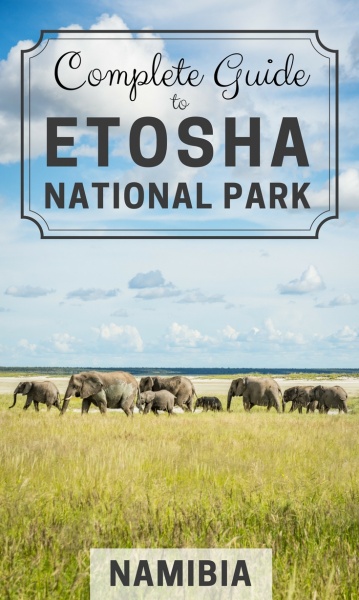
Etosha National Park spans an area of 8,600 square miles and is home to both commonplace and incredibly rare species of animals. On your self-drive tour, you may be lucky enough to spot elephants, endangered black rhinos, lions, giraffes, and possibly even leopards. And no doubt you’ll see plenty of zebras and antelope grazing right near the road. It is also home to more than 340 bird species, including the ostrich and the flamingo.
Early mornings, around sunset, and during the night are the best times to spot wildlife in the park. During the dry months, the floodlit waterholes at the main camps draw nearby animals for incredible viewing. The lions of Etosha not only use the waterholes to hydrate but also to prey on unsuspecting animals.
Etosha National Park is one of the top tourist destinations in Namibia so advanced accommodation bookings are recommended during the busy season. The more time you spend driving through the park, the better your chances of spotting wildlife!
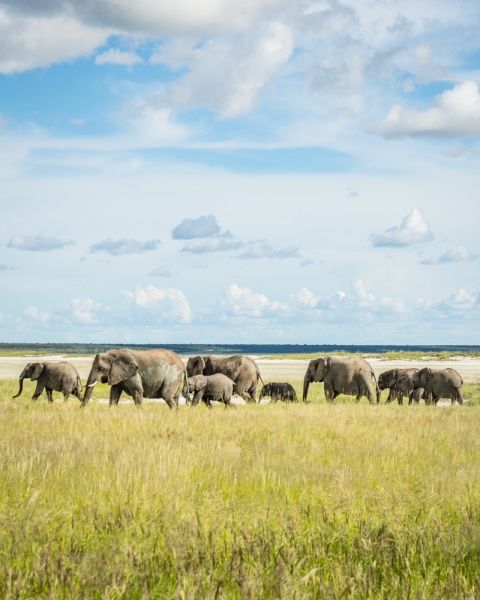
Don’t forget to check out our web story: Etosha National Park: A Self Drive Safari in Namibia
Disclaimer: This post may contain affiliate links. If you make a purchase or booking through one of our links we may earn a small commission (don’t worry, it’s at no extra cost to you).
Etosha National Park Travel Basics
Travel tips for etosha national park.
- Namibia accepts two kinds of currency: the Namibian Dollar (NAD) and the South African Rand and they are pegged at the same value. At the time of writing, the exchange rate was 13.87 NAD to $1 USD.
- The only place in the park that is cash-only is the Galton Gate. However, if you don’t have cash on you it is possible to pay your park entrance fee when you leave through another gate or at one of the campsites.
- We recommend renting a 4×4 vehicle for your self-drive safari in Etosha (and for Namibia as a whole). The roads in Etosha are generally in good condition, but you never know when you’ll encounter a rough patch.
- You cannot get out of your car in Etosha unless you are in one of the picnic areas or in the fenced lodge areas. Keep your water and snacks in the front seat.
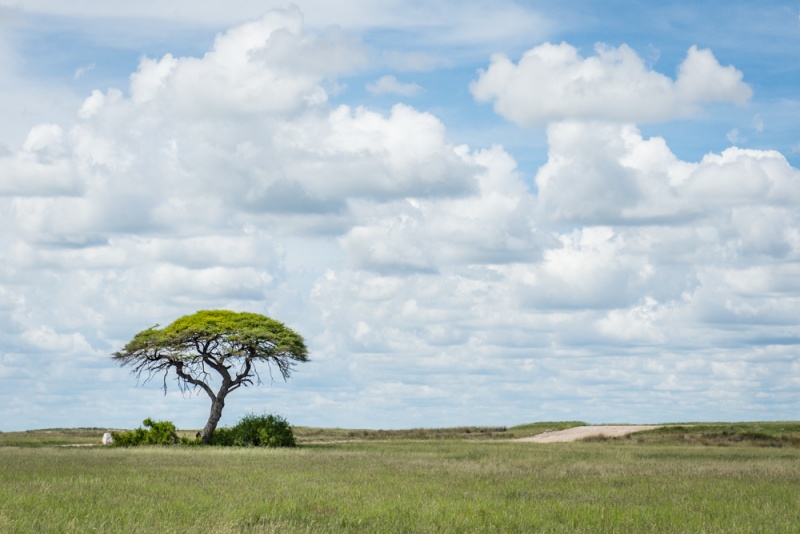
Best Time of Year to Visit Etosha National Park
Namibia has a pleasant climate year-round but if you want to have easy access to wildlife gathered around the many watering holes, you’ll need to visit during the dry season – May to October. That is the busiest time of year in Etosha National Park so be sure to book your campsite or lodge well in advance.
The wet season is a nice time to visit Etosha because there are fewer crowds and it’s easier to secure last-minute lodging. But the roads can be really rough and it can be more difficult to spot wildlife as they can find water all throughout the park.
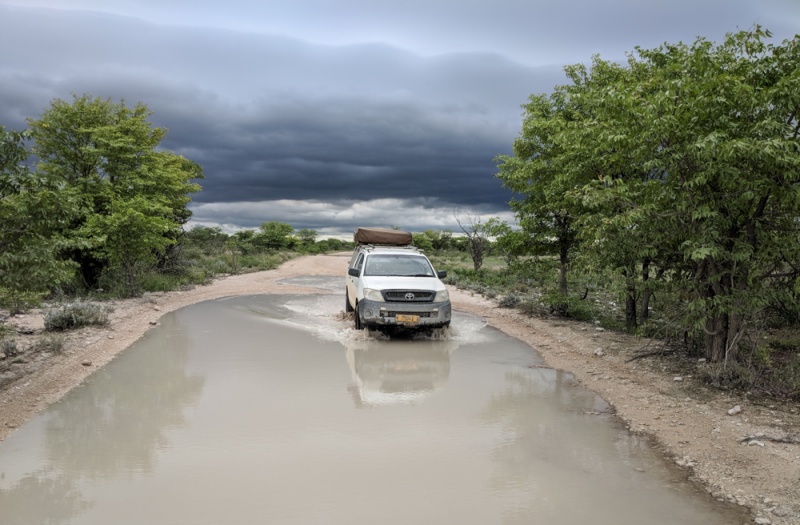
Packing for Etosha National Park
Read all about everything you should pack for your Namibian vacation here !
Getting to the Park
There are four different entrances to access the park (outlined below). The southernmost Anderson Gate is approximately 260 miles from Windhoek which is where you’ll likely fly into and out of.
Amenities in the Park
Most of the campsites have small stores that sell a few necessities. Wine, beer, a few canned goods, snacks, and overpriced souvenirs to name a few. But don’t count on them for having everything you’ll need to cook your meals. You’ll want to stock up on food and snacks before entering the park.
Note: Due to an outbreak of Foot and Mouth Disease in Northern Namibia, including Etosha, there were agricultural checks at all exit gates when we visited in March of 2018. No one was allowed to take raw meat or eggs out of the park. If you are planning on bringing meat to BBQ into the park, make sure you only bring as much as you need as you will have to throw any extra away before exiting.
Complete Guide to Etosha National Park
The entrance gates to Etosha National Park are open from sunrise to sunset. As are the gates to each campground. If you are found driving around the park before or after these times you’ll face a fine. You will also face a fine if you attempt to exit the park after sunset.
- The speed limit of 60 kilometers/hour in the park
- Do not feed or disturb wildlife
- No exiting the car unless in designated toilet/picnic spots
- No driving in the park before sunrise or after sunset
- Do not drive off of marked roads
- Drones are not allowed in Etosha National Park
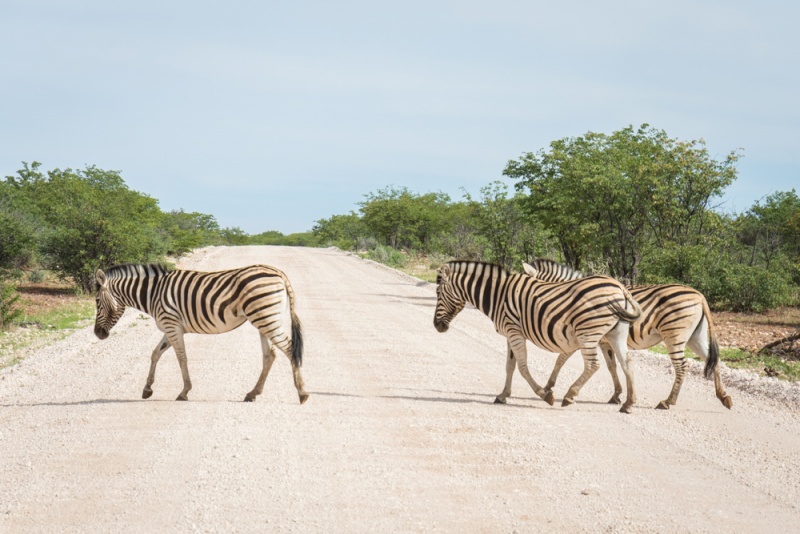
Etosha National Park Entrance Gates
There are four gates that allow access to Etosha National Park. Each gate has security guards and they will request to check your passport and sign you in. You’ll need to sign a form stating that you agree to follow the rules of the park prior to entering.
- Galton Gate – the western entrance to the park. They only accept cash for your entrance fee. While you may be able to pay by card when you leave the park, it’s better to bring cash just in case. The Galton gate is quite far from the lodges and campgrounds in the eastern region so make sure you give yourself plenty of time to traverse the park. If you don’t have enough time to cross the park, plan on staying overnight at the Olifantsrus campground or in a room at Dolomite Camp.
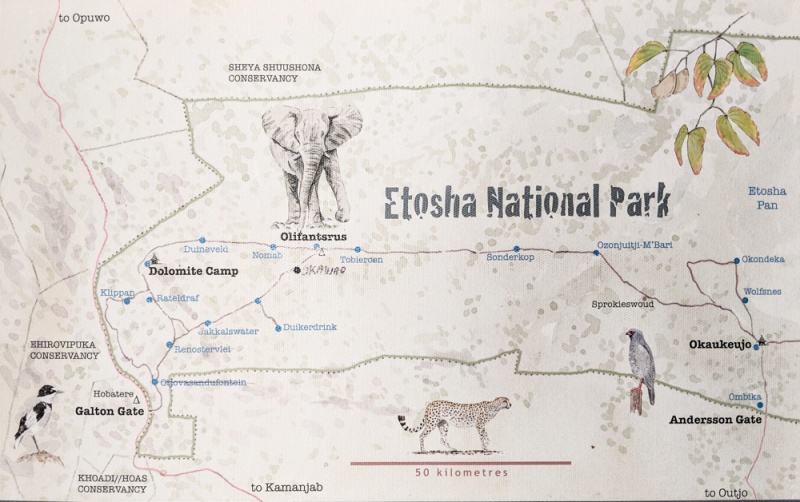
- Anderson Gate – the southern entrance to the park and the closest to Windhoek. It is also the most popular (busy) gate as it has the most services nearby – campgrounds, lodges, etc.
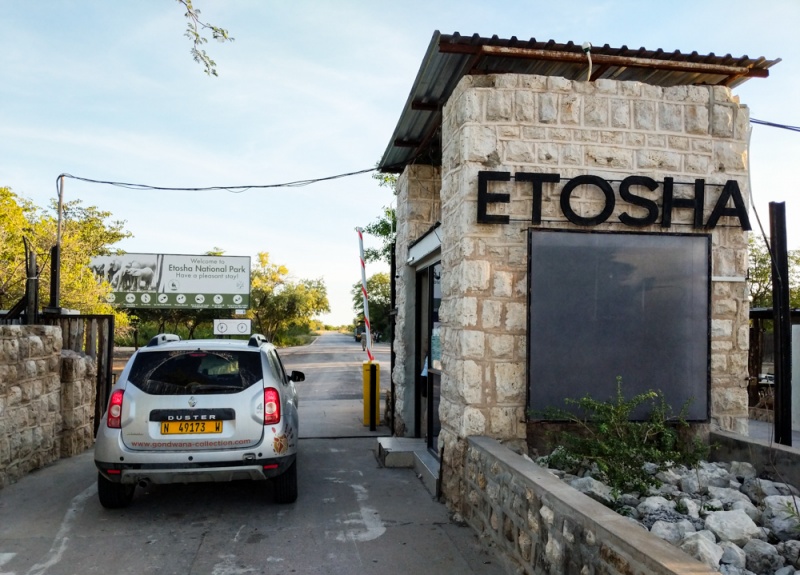
- Von Lindequist Gate – the eastern entrance to the park and the closest access point for the Namutoni Camp.
- King Nehale Gate – the northern entrance to the park.
Etosha Entrance Fees
The fee to enter Etosha National Park is 80 NAD/person per 24-hour period + 10 NAD/car. So if you enter at sunrise and plan to stay the night, you’ll probably want to purchase two 24-hour permits per person to give yourself time to exit in the morning.
Safety in the Park
Do not get out of your car at any time in Etosha unless you are in a designated toilet or picnic site or in a campsite area. All of the campsites in the park are surrounded by electric fencing to keep animals out.
Do not feed the animals. Rabies can be common in jackals and squirrels in the park.
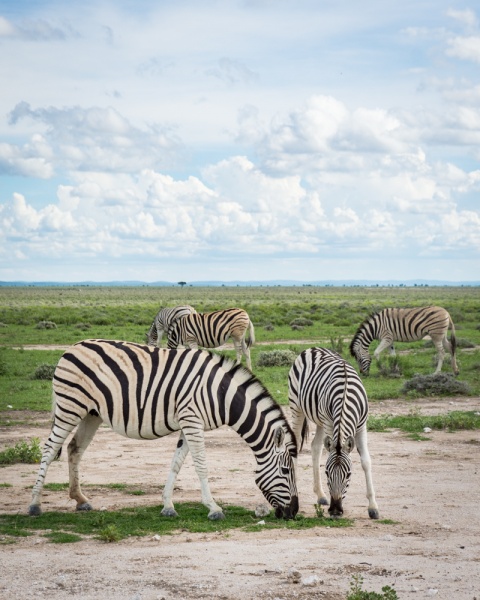
Road Conditions
Most of the roads throughout Etosha National Park are unpaved and can be rough, especially during the rainy season. Roads can have deep ruts and you’ll likely need to drive through several large puddles. A 4×4 vehicle is highly recommended. Make sure you check out our advice for renting a vehicle in Namibia .
Gas and Food in the Park
Once you are inside the park, supplies are limited. It is recommended that you fill up on gas and food prior to entering the gate. Most of the campsites have stores but the pickings are slim and expensive. They also tend to close early. And the gas stations don’t always have gas available. Better to be prepared.
Etosha Campsites
All of the campsites in the park are managed by Namibia Wildlife Resorts (NWR) and can be booked directly on their website. Keep in mind that they have limited space and often book out way in advance. If you don’t plan ahead, there are also several options right outside of the park gates.
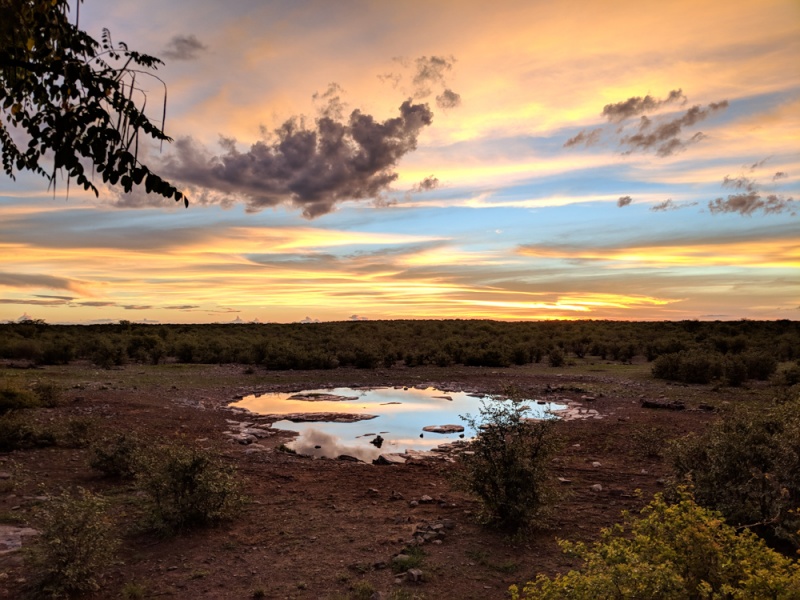
One of the advantages of camping inside the park is that each campground has its own waterhole and viewing area. Sunset and sunrise at the camp waterholes offer prime game viewing opportunities as you aren’t allowed to be driving in the park during these times.
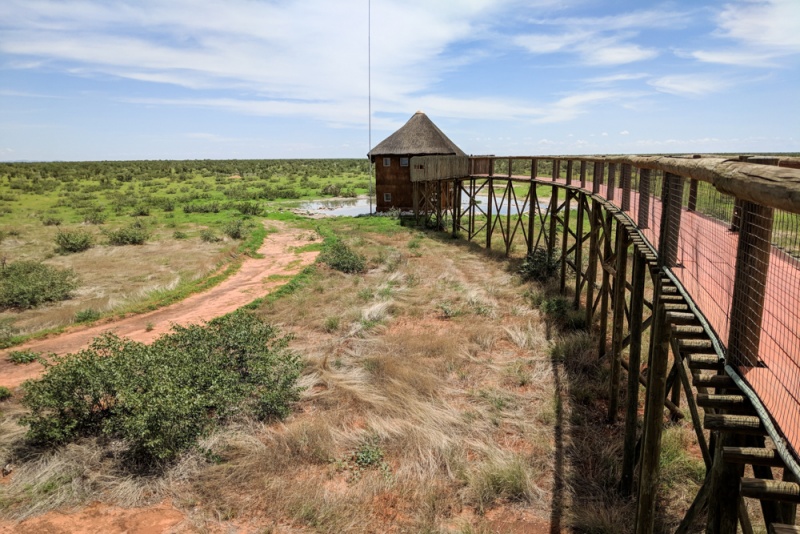
Olifantsrus Campsite
Olifantsrus is the only campground in the park that is not connected to a lodge. This makes for a much more rustic and authentic camping experience. It also has an excellent covered platform overlooking the waterhole for amazing views of the animals from above.
Camping Fee: 389 NAD/person Number of Campsites: 10 Camping Amenities: Each campsite has braai facilities and power is shared between every two campsites. Gas Station: No
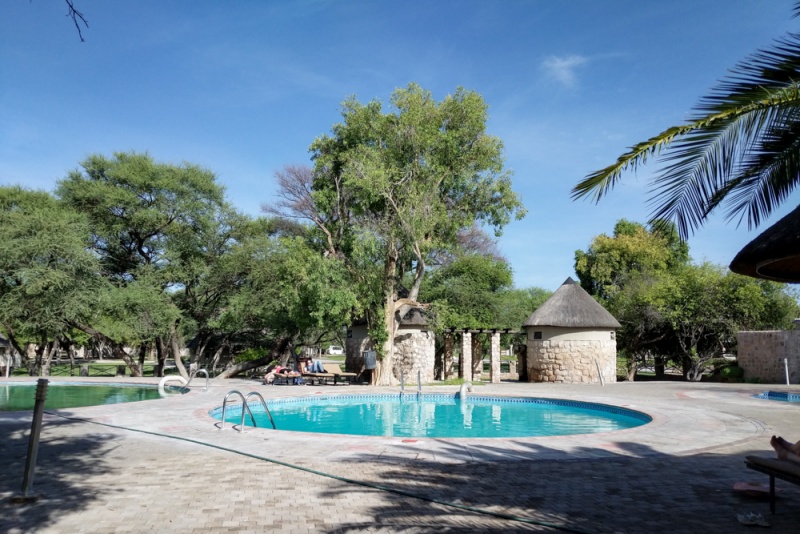
Okaukuejo Campsite
Okaukejo is the busiest campground in the park due to its proximity to the Anderson Gate (and Windhoek). Almost everyone that visits Etosha passes through here at some point. Make sure to book your campsite in advance (or at least stop by in the morning to check availability) if you plan on staying here.
Camping Fee: 333 NAD/person Number of Campsites: 46 Camping Amenities: Pool, restaurant, small store, hot showers, drinking water, electricity. Gas Station: Yes
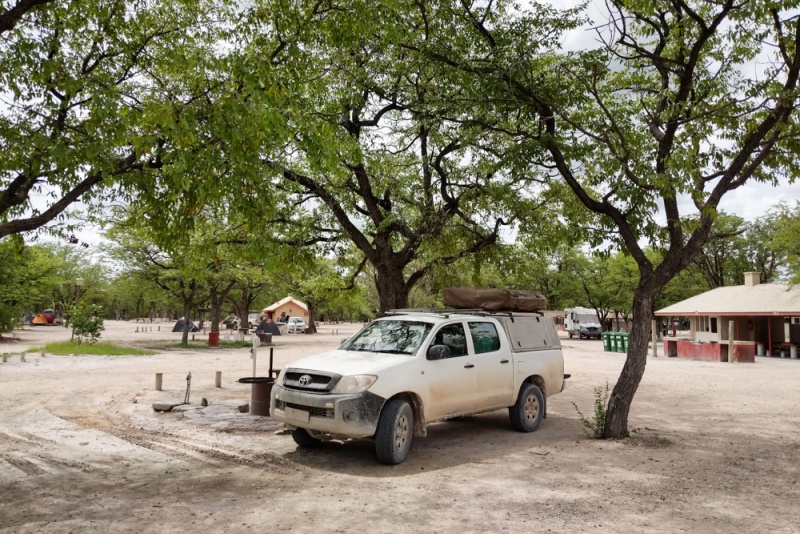
Halali Resort and Campsite
This is the largest campground in Etosha and due to its central location, it provides quick access to many of the park’s most popular waterholes.
Camping Fee: 333 NAD/person Number of Campsites: 58 Camping Amenities: Pool, restaurant, small store, hot showers, drinking water, electricity. Gas Station: Yes
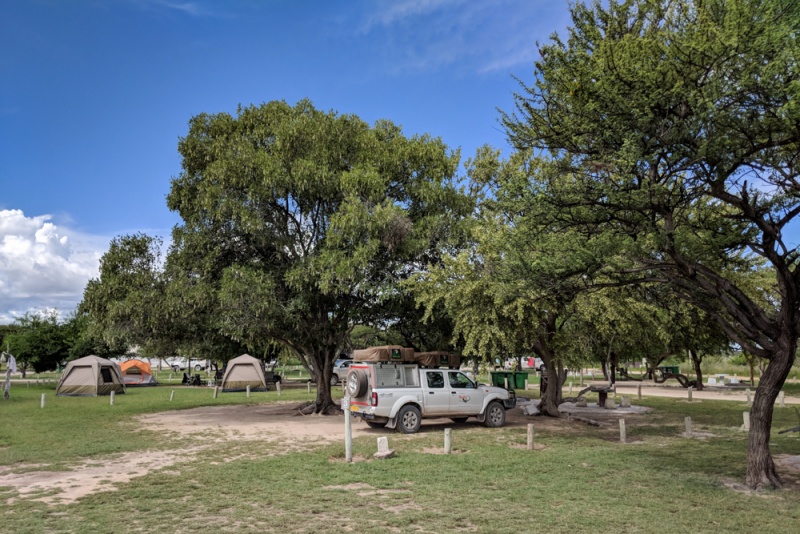
Namutoni Campsite
This is the nicest campground in the park as the sites are grassy and shaded. It also gives you access to an excellent viewing platform at the Namutoni waterhole.
Camping Fee: 333 NAD/person Number of Campsites: 25 Camping Amenities: Pool, museum, restaurant, small store, hot showers, drinking water, electricity. Gas Station: Yes
Campsites Right Outside of the Park
All of the campsites inside of Etosha are operated by NWR and tend to be expensive and run down. Wi-Fi is an extra charge and the bathrooms rarely have soap or paper towels. However, if you drive just outside of the gates of the park you can find campgrounds that are much nicer and less expensive.
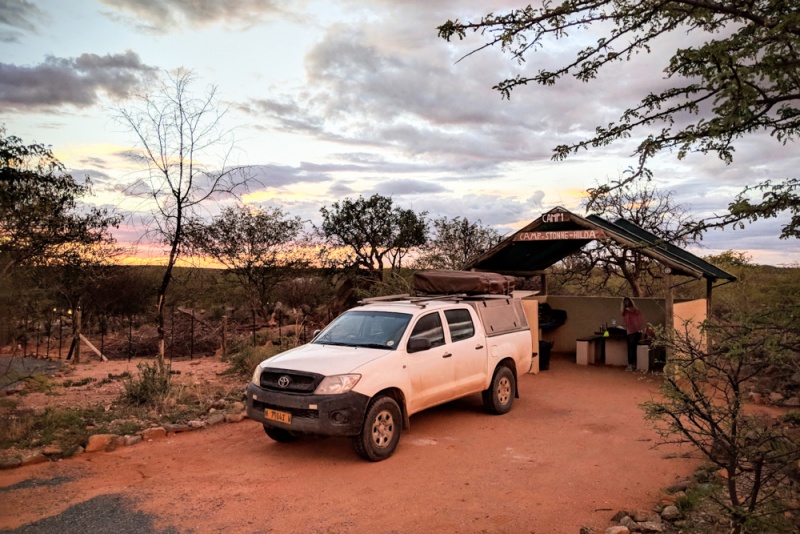
Oppi-Koppi Rest Camp
Camping Fee: 150 NAD/person Camping Amenities: Campsite has ostriches that don’t seem to be frightened by people as well as a nightly porcupine feeding. It also has a swimming pool, bar, and restaurant onsite. Every site has water, electricity, a covered kitchen area with lighting, a picnic table, and a sink. This is a good place to get some laundry done as they also have drying lines.
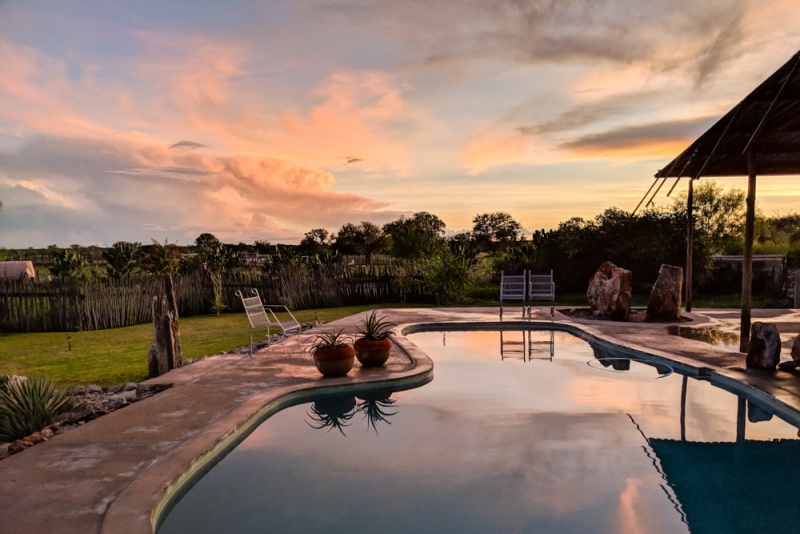
Eldorado Guest House and Camping
Camping Fee: 200 NAD/person Camping Amenities: The campground has several animals caged on site and they offer guided tours to see them up-close. You will also have access to the swimming pool, bar, and restaurant. Every campsite has water and electricity.
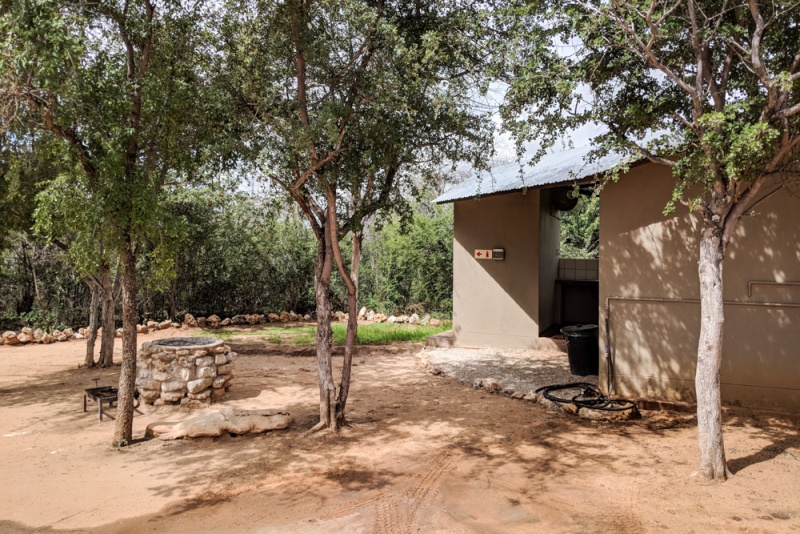
Onguma Tamboti
Camping Fee: 255 NAD/person Camping Amenities: Each campsite has its own shower, bathroom, and sink for dishes. The campground has a small store with unique souvenirs, a restaurant overlooking a waterhole, and a swimming pool.
Animal Spotting in Etosha
There are a wide variety of animals present in Etosha National Park, including four of the “Big Five” African safari animals – Elephants, Rhinos, Lions, and Leopards! 114 mammal species and hundreds of reptiles and birds call it home. Early mornings and later afternoons are the best times to spot wildlife as they generally tend to lounge in the shade in the heat of the day.
As tempting as it may be to get out of your car for a better photo, you really should be a good steward and practice sustainable travel photography . Follow the rules of the park and stay in your vehicle unless you’re in one of the picnic or camping areas. Also, make sure you’re off the roads before dark. The rules are there to protect both you and the animals of Etosha.
Be on the lookout for the following species (and note that Nick snapped all of these photos himself):
African Elephant
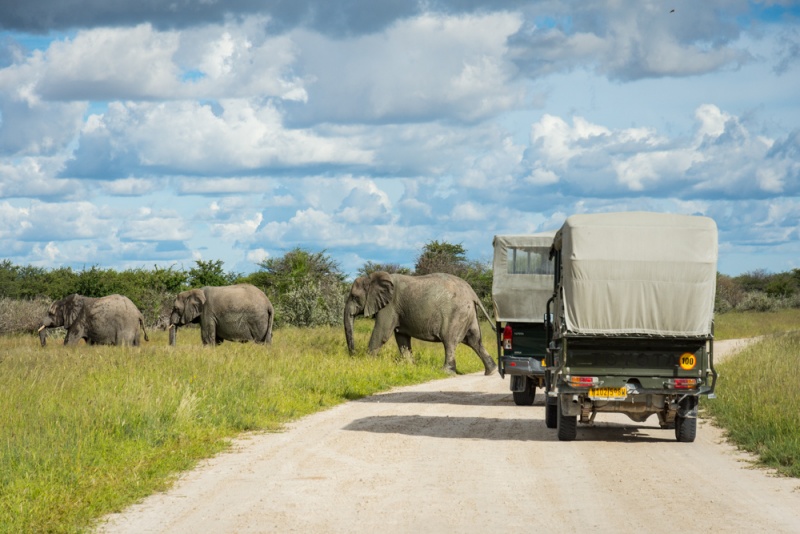
There are over 2,000 African elephants in Etosha. These animals generally travel in small family units of 10-20 so you’re more likely to spot several roaming around together. The best place to spot African elephants is either at the waterhole at the Namutoni Campsite or on the roads heading north from there.
Southern Giraffe
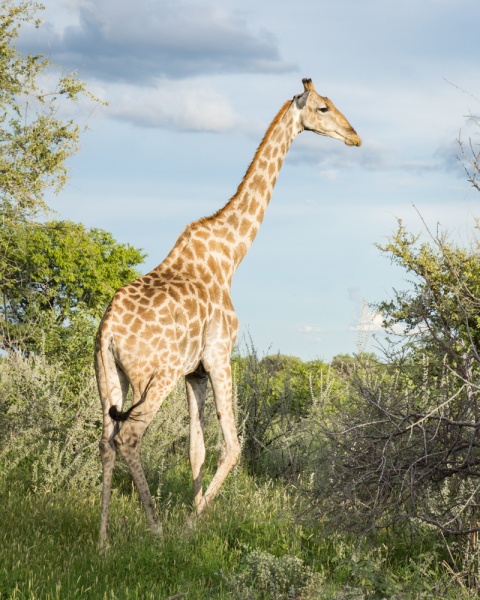
You’re likely to see dozens of giraffes throughout the park, grazing near the road. Being that they are the tallest mammal on earth, they generally tower above the surrounding vegetation. They are cautious around waterholes as this is where they are most vulnerable to attack by lions.
Black Rhino and White Rhino
Black Rhinos are smaller than White Rhinos and have a hooked lip and a head held straight. Their numbers are currently stable due to conservation efforts in Etosha to protect them from poachers who kill them for their horns. They are very difficult to spot and generally only visit waterholes at night.
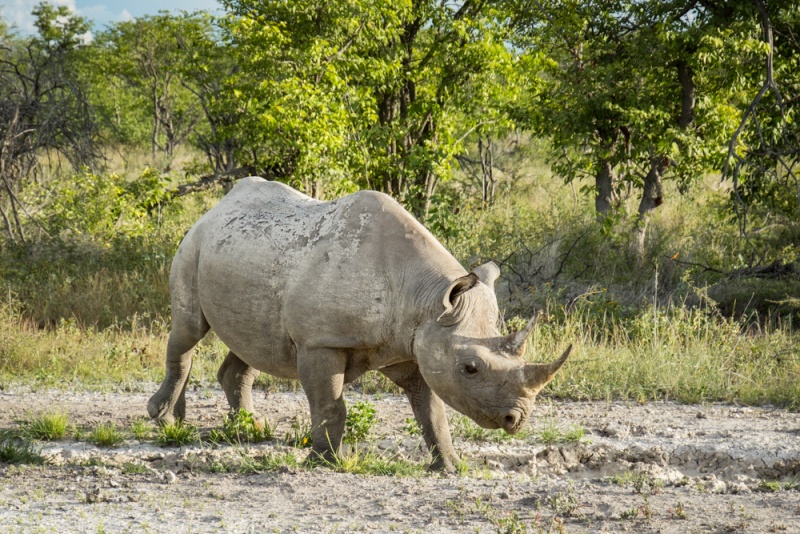
White Rhinos have a square lip and hold their heads downward. They were introduced to Etosha in 1995. They tend to be easier to spot as they are more comfortable around cars and enjoy rolling around in mud puddles.
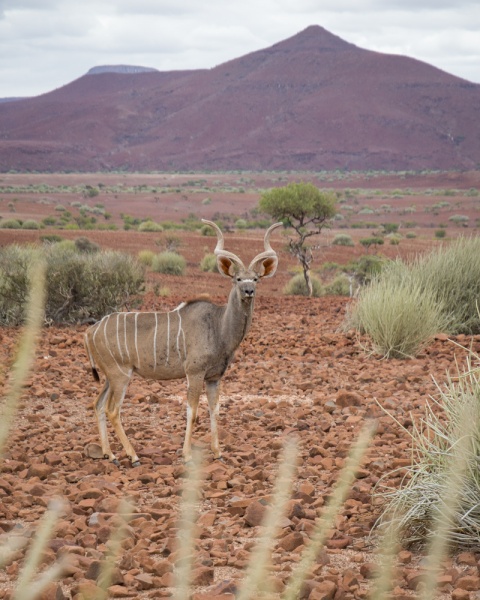
You can recognize this species of antelope by their impressive corkscrew horns and white stripes extending down their backs. They can be seen grazing in open plains all over the park.
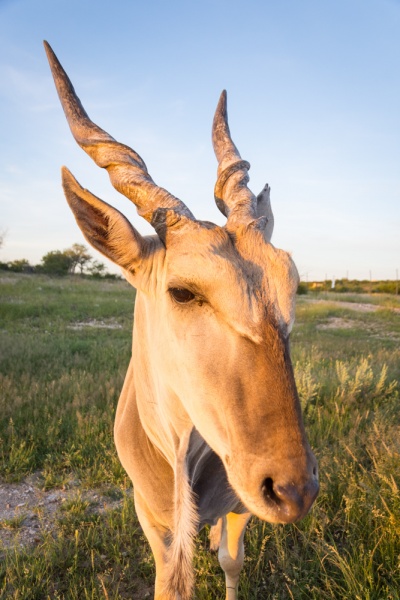
This is the largest and heaviest species of antelope in Africa and is fairly uncommon to spot. If you stay at the Eldorado Campground, there are several behind a fence near the road.
Black-faced Impala
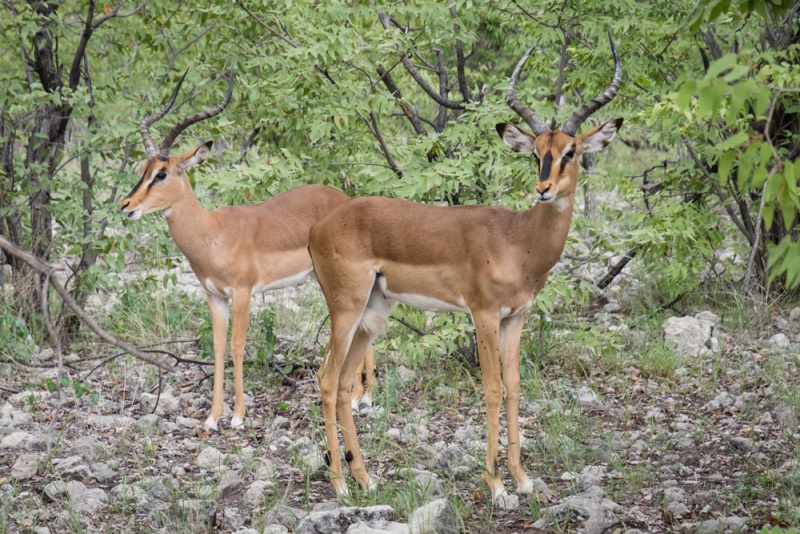
These once endangered antelope can be spotted by the black coloring on their faces. They are endemic to Namibia but they can be difficult to spot as they prefer to stick to the woodlands rather than the open plains. Only the males have horns.
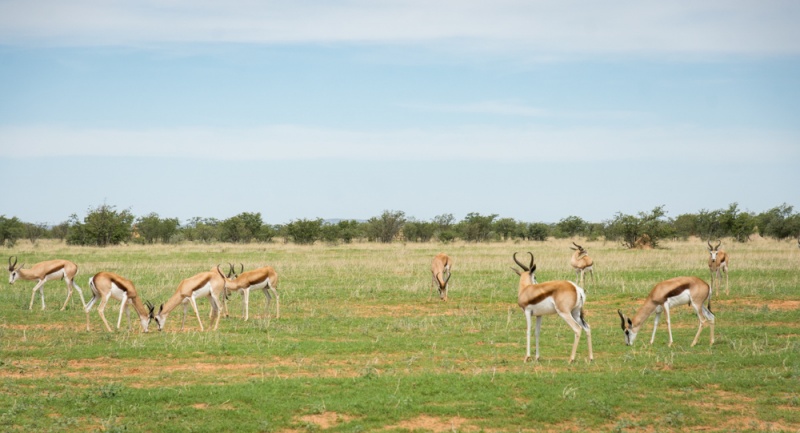
You’ll likely see hundreds of these around the park. They travel in herds and gather on open plains. These are one of the most common antelope in Namibia and if you’re lucky you may see them “pronking” – they quite literally leap through the air. It is a unique move used to ward off predators.
Burchell’s Plains Zebra and Hartmann’s Mountain Zebra
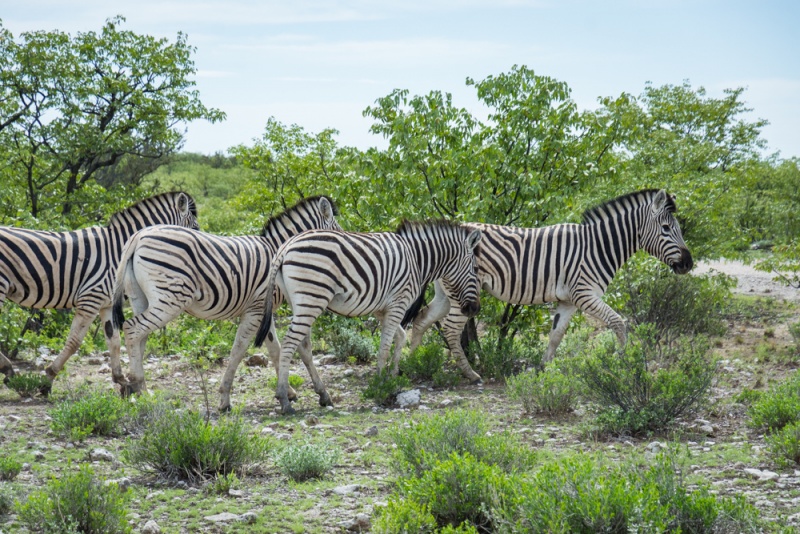
You can tell the difference between the two in that Burchell’s Plains Zebras have virtually unstriped white legs while the Hartmann’s Mountain Zebras have fully striped legs. They are also near-endemic to Namibia.
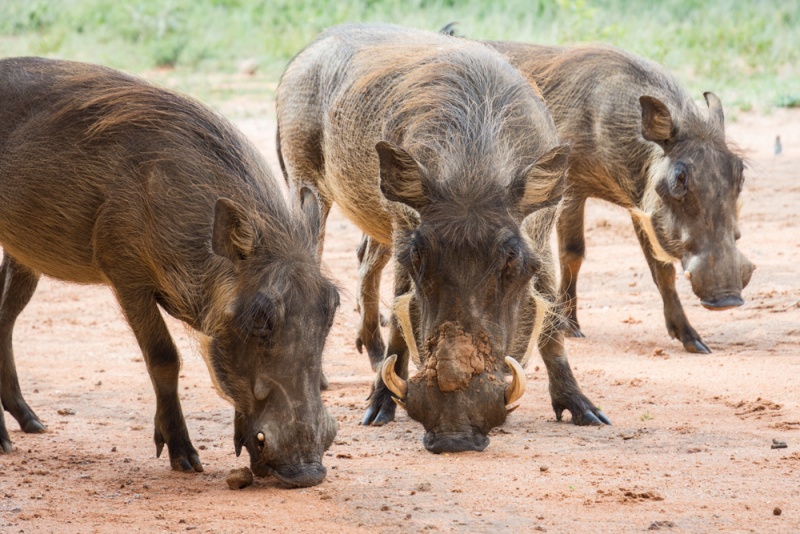
These are wary creatures as they are a prime target for lions and leopards. Those in Etosha are very skittish so you’re most likely to see them scurrying away from you, tail held straight up in the air.
Blue Wildebeest
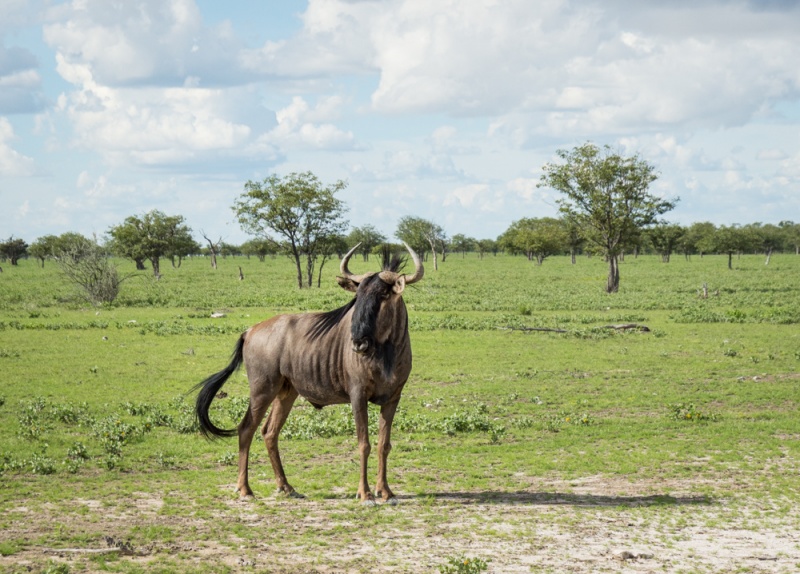
You’re likely to see quite a few of these magnificent creatures hanging solo in open fields or near herds of zebras. Sadly, their numbers have decreased in recent years as they are prime targets for lions.
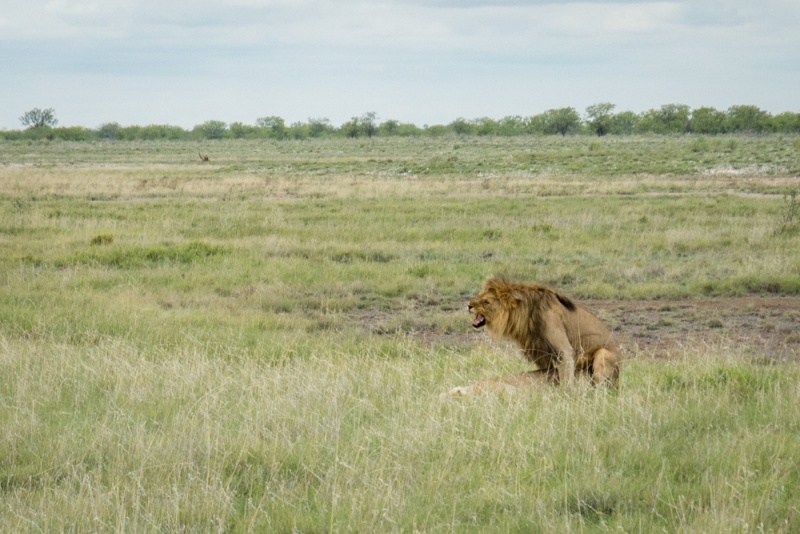
These can be difficult to spot in Etosha but can be seen hanging out around watering holes by day. They generally hunt after dark and primarily prey on zebras. They live in prides of 5-10 females, 2-3 territorial males, and their cubs.
Gemsbok (Oryx)
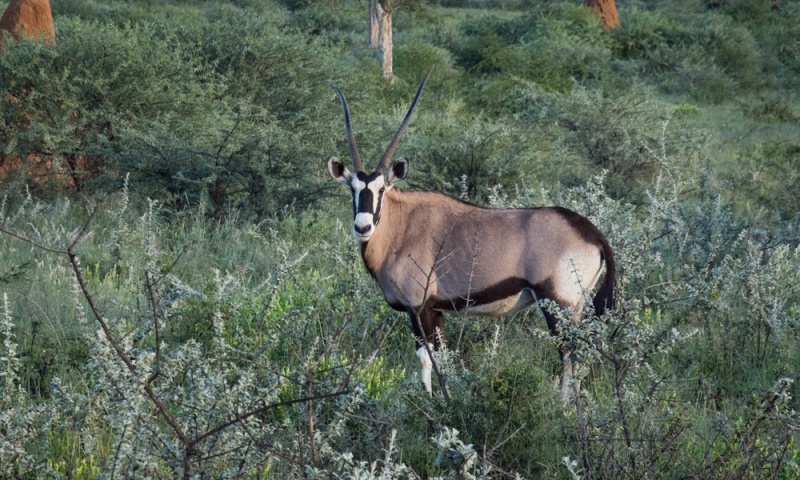
Sporting long, straight horns, these antelope can be seen frequently throughout Etosha. Females have longer, thinner horns than males.
Black-Backed Jackal
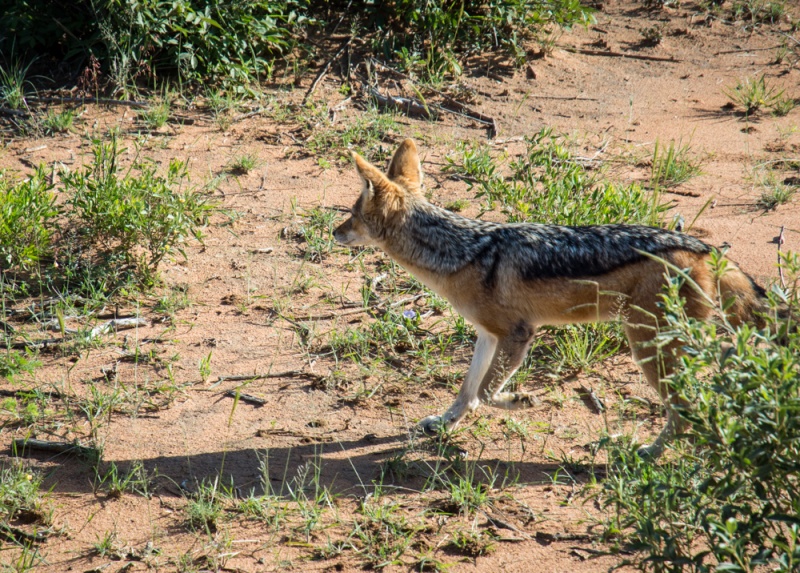
These may seem innocent when approaching your car but beware, many have rabies so don’t feed or touch them. They are generally scavengers but also prey on rodents, insects, and birds.
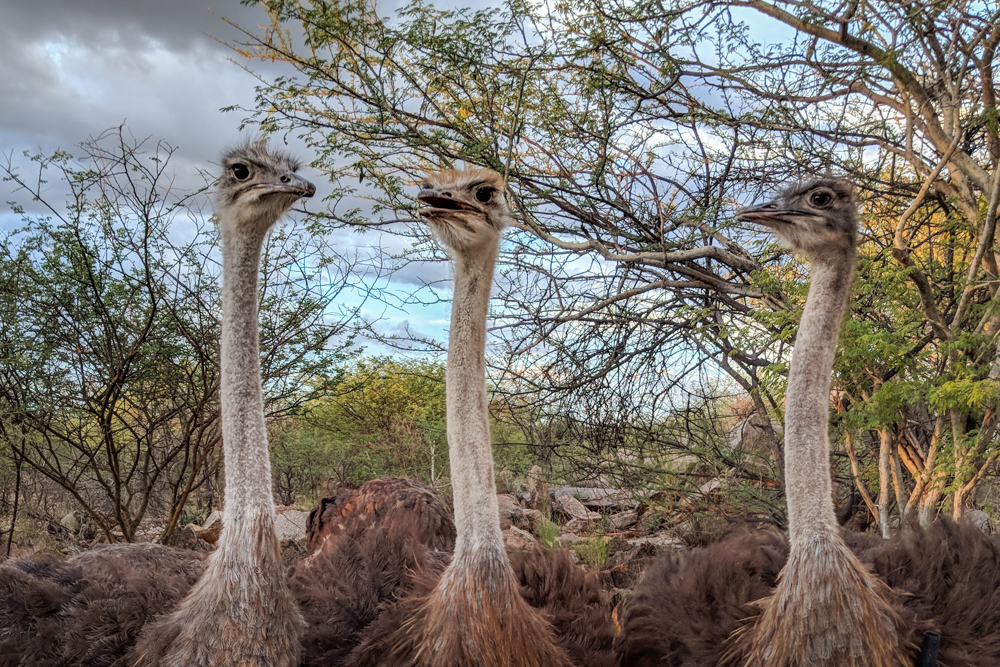
This is the world’s heaviest bird and they can be found throughout Etosha.
Damara Dik-Dik
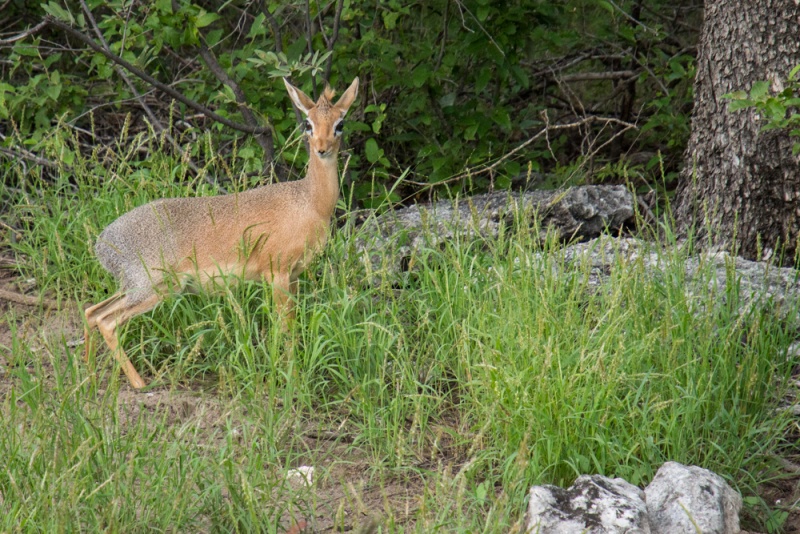
These darling tiny antelope are the smallest in Namibia. They have large eyes and look almost like cartoons. They often stand motionless in order to avoid detection.
Want more tips on traveling to Namibia? Read all about what to pack , what to expect when renting a car , and follow our recommended road trip itinerary !
We hope you have an amazing time visiting Etosha National Park!
Want more help planning your trip to Namibia? Check out our favorite travel guides!
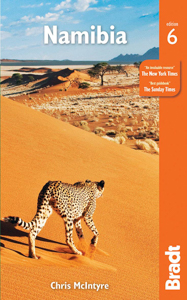
SHARE THIS ON PINTEREST
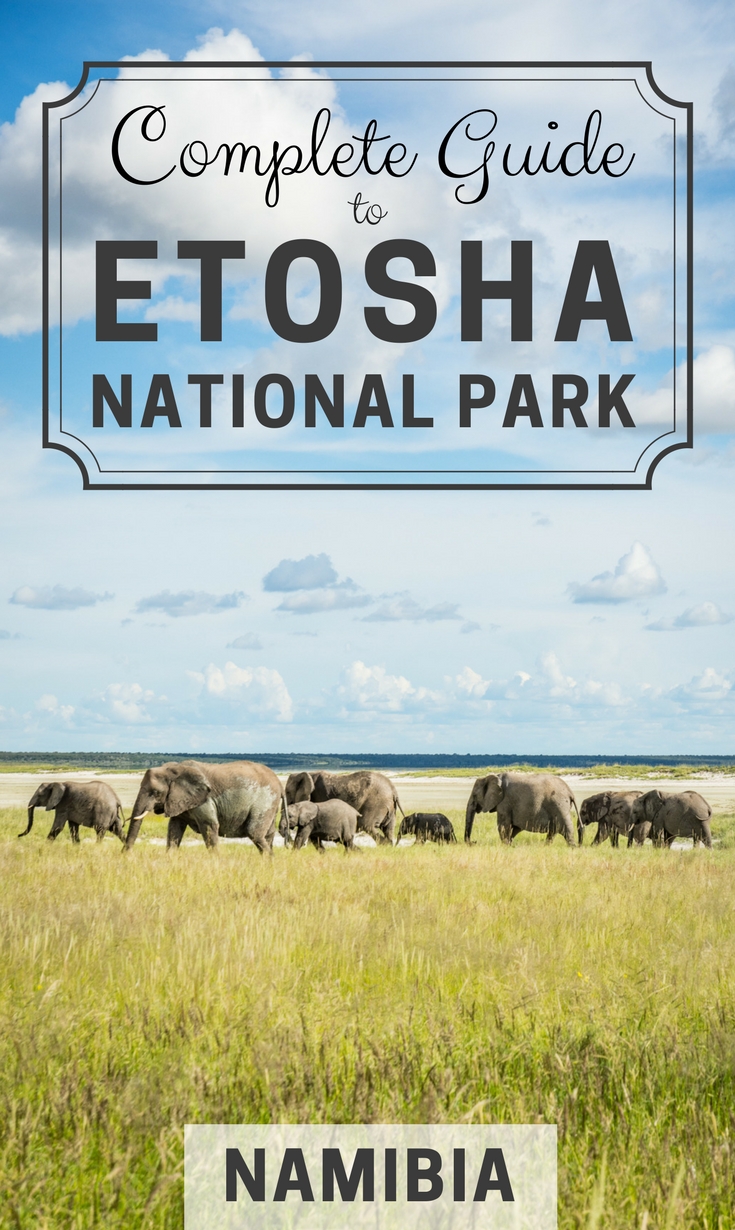
About the Author:

Val grew up in Portland, Oregon but moved to Oahu on a whim back in 2013. She sold her house and all of her belongings and bought a one-way ticket. Since then she’s taken two around-the-world trips and has visited 60-ish countries while living out of a duffel bag. Val started documenting the Wandering Wheatleys travels back in 2013 as a way to update friends and family about her whereabouts and to relay humorous daily interactions. The only readers were her mom and her mother-in-law but that didn’t stop her! These days you’ll find Val dreaming up future trips, creating new travel content, managing a team of amazing travel enthusiasts, and chasing around her two adorable but naughty kids.
View all posts
Related Posts
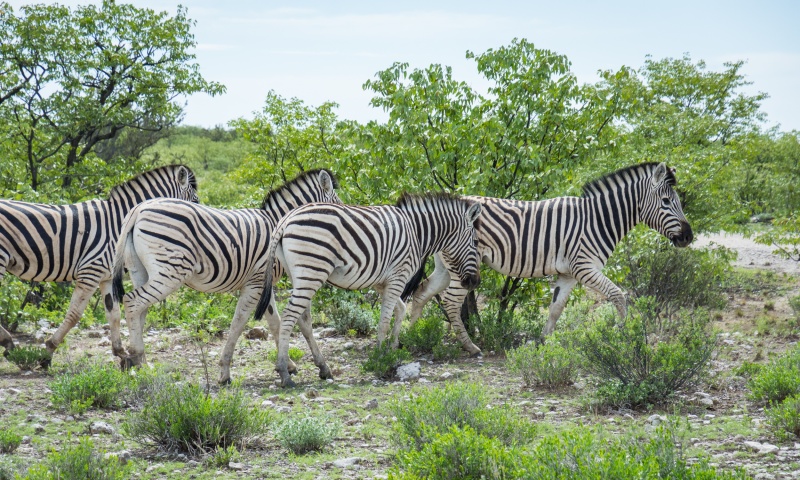
Namibia Travel Tips: 9 Things to Know Before Traveling in Namibia
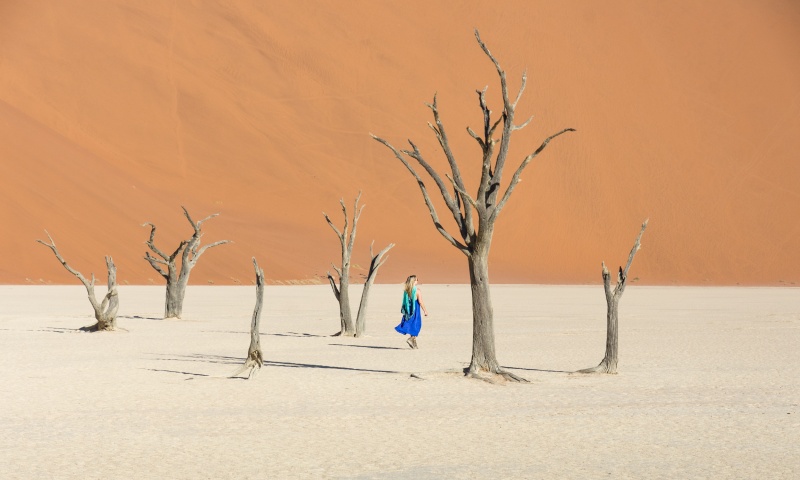
Namibia Packing List: What to Pack for Namibia
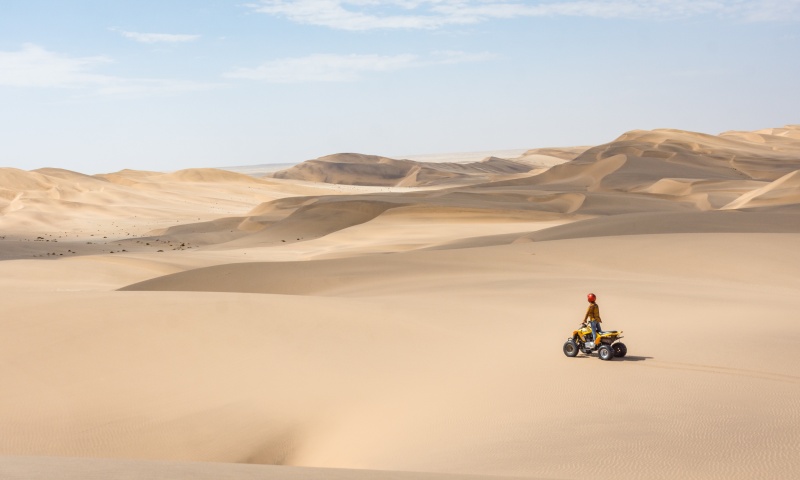
The 12 Best Things to do in Swakopmund, Namibia
1 thought on “etosha national park: a self drive safari in namibia”.
Amazing post! I’m using this to help plan my Namibia road trip! xoxo
Leave a Comment Cancel Reply
Your email address will not be published. Required fields are marked *
Etosha National Park safari
Etosha National Park is a national park in northwestern Namibia and one of the largest national parks in Africa.
It was proclaimed a game reserve in March 1907 in Ordinance 88 by the Governor of German South West Africa, Friedrich von Lindequist.
Etosha NP is unique in Africa. as the park’s main characteristic is a huge salt pan that can be seen from space. Yet there is abundant wildlife that congregates around the waterholes, giving visitors almost guaranteed game sightings.
At the same time Etosha National Park is one of the most accessible game reserves in Namibia and Southern Africa.
Table of Contents
Why visit Etosha National Park?
Covering some 8,598 square miles (22,269 square km), it centres on the Etosha Pan, a vast expanse of salt with lone salt springs, used by animals as salt licks.
The park is considered one of the best places to go on Safari in Southern Africa and for good reason. The lack of water in the area means animals are concentrated at watering holes.
The quality of roads, lack of huge crowds, and general ease of travelling in Namibia are big attractions to this beautiful park alsol.
The floodlit waterholes at all the main camps and hides nearby are a photographer and nature lover’s dream whilst most lodges have private decks or verandas to observe the pristine landscape.
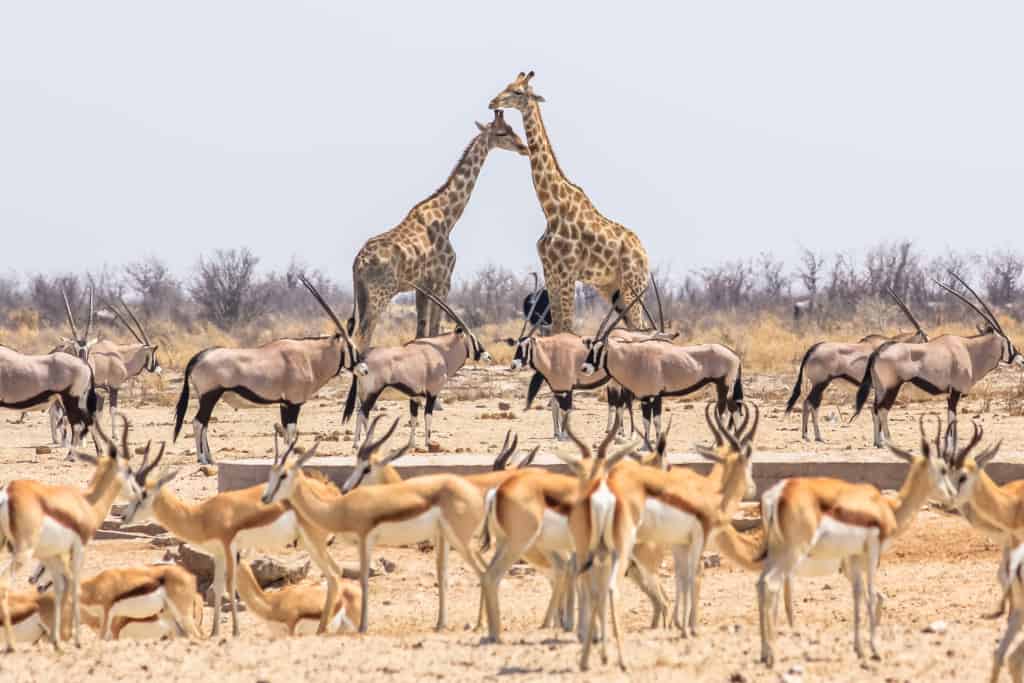
The park has a large population of wildlife and has around 114 different mammals that visitors have a chance to spot on their safari. It is also home to four of the big five animals, excluding the African Buffalo.
Water is scarce in the park. However, there are a large number of water holes both natural and manmade that provide water for the wildlife. These concentrated sources of water create great game density as animals all come to the sources of water.
The water holes bring in large herds of elephant, springbok, oryx, zebra, eland, kudu, and even lonely black rhinos. Smaller wildlife that can be found around Etosha include jackals, honey badgers, mongoose, and the bat-eared fox.
Okaukuejo watering hole is always a hit with visitors with its proximity to the rest camp. The watering hole is lit by flood lights throughout the night which provides visitors a chance to watch nocturnal animals come for a drink of water.
Some of Africa’s most famous scenes have unfurled here including lion, elephants, hyenas, and rhinos squaring off as they compete for water. Other great viewing success can be had at Homob, Kelin Namutoni, Okundeka, Chudop, and Rietfontein.
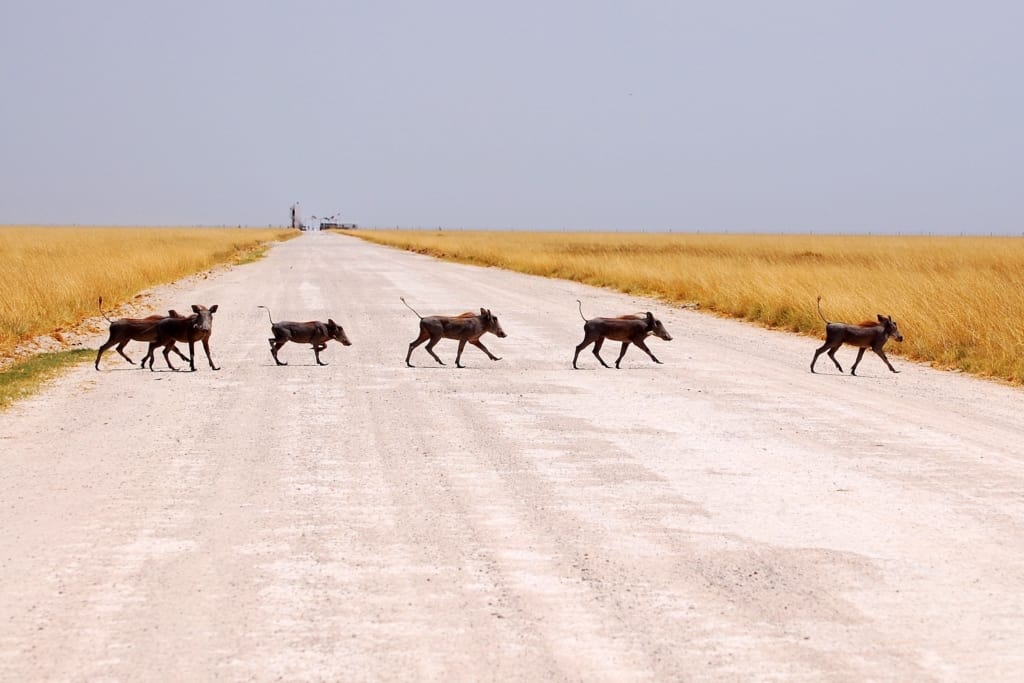
About one-third of the 340 bird species recorded in the park are migratory; including a good number of waders attracted to the Etosha pan in the Wet season. The pan is an important breeding ground for lesser and greater flamingos.
The desert habitat is excellent for seeing a wide variety of birds of prey – up to 35 species, including many hawks, vultures, eagles and falcons. Migratory birds are present from November to April.
The eastern portion of Etosha National Park has a tree-savanna type of vegetation, abundant in tambouti, a deciduous tree that is locally used for furniture and cabinet work, wild fig, and date palms.
Moringa trees are typical of the more arid thorn-shrub savanna of the western part of the park. The German colonial fort of Namutoni at the eastern end of the pan resembles a fort of the French Foreign Legion. It has been restored for use as a tourist camp for the park.
Other activities at Etosha National Park
Here are some other Namibian safari activities in Etosha National Park that visitors can look forward to on their trip:
- Game drives: Enjoy a fascinating African wildlife adventure in Namibia during day and night game drives or watch wild animals like Hippo, Giraffe and Lion on the waterholes with amphitheatre-like atmosphere and floodlights at the Rest Camps.
- Photo safaris: Started by avid wildlife photographer Rian van Schalkwyk, the tour takes amateur and professional photographers to all the right places to get that shot you always wanted to hang on your wall.
- Discover the native Hai||Om Culture: For many thousands of years, the Hai||Om San (or Bushmen) inhabited the areas that now constitute the park. Get a uniquely Hai||Om perspective on the plants, animals, history, and geography of Etosha.
- Watering hole: Join the Etosha “Night Life” at Okaukuejo Water Hole where the big show begins at dusk when floodlights are turned on to transform the waterhole into one of Namibia’s greatest stages. You can kick back on the benches that surround the waterhole with a Windhoek lager and watch as the wildlife – unphased by the light – slinks and strolls out of the darkness to the banks of the spring-fed pool.
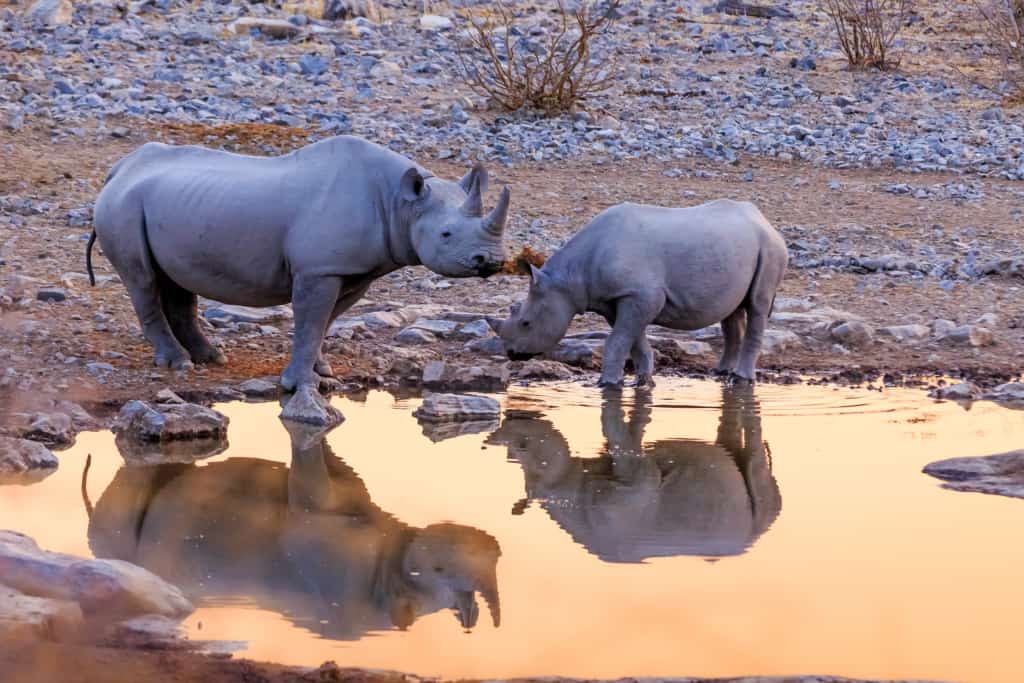
How to get to Etosha National Park?
There are no scheduled flights, but there are three airstrips inside the park for charter flights. Most of the upmarket lodges outside the park have private airstrips as well.
Travelling from Windhoek to Etosha by plane is a short route – the journey from the capital Windhoek to the nearby Ongava Lodge’s airstrip will take approximately an hour.
Air Namibia also offers daily one-hour flights from Eros Airport, also located in Windhoek, to Ondangwa Airport, which is located just north of Etosha National Park.
Alternatively, there are fly-in trips that travel between different Namibian parks by charter flight.
Etosha is located 435km/270mi north of Windhoek. It is easy to visit either independently (self-drive) or on a tour. The drive on paved roads takes about six hours.
The roads in the eastern section of the park are accessible by 2WD car.
Tariffs & Regulations
Entrance fee.
All Etosha National Park fees are payable at the gate at time of entrance. Park fees are valid for 24 hours.
- Foreign Adults: N$80 Per Day ($5 USD)
- Children Under 16: Free Of Charge
- Private Vehicle: N$10 Per Day ($0.60 USD)
Regulations
If you keep to park rules, you can stay with the animals as long as they are not disturbed by your presence.
Accommodation at Etosha National Park
Tourists at Etosha can choose from a number of different options when deciding where to sleep.
There are various accommodation options in Etosha National Park including Gondwana’s Etosha Safari Camp and Lodge offering great food, excellent service and is renowned as one of the best lodges in Etosha National Park.
Eagle Tented Lodge and Spa also offers brilliant game viewing activities. This Namibia safari lodge near Etosha National Park and spa is situated on the 21 000 ha Epacha Private Game Reserve.
At this lodge, the breathtaking views over the surrounding mountains and valley will overwhelm both new and accustomed visitors to Namibia. The lodge offers sophistication and style combined with high standards of service, all in a relaxing atmosphere at this Namibia safari lodge.
There is a nice selection of camps to explore Etosha National Park with pools, good facilities, watering holes for night viewing, and decent restaurants.
Three camps outside of Etosha that can be booked include the Gondwana Collection’s Etosha Safari Camp that is located to the south near the Anderson Gate.
The second being Onguma’s Tamboti Luxury Campsite and the third is Hobias Campsite in Damaraland to the west of the park.
Guests on a self-drive safari with a campervan can make significant savings by sleeping in their vehicle.
Bars/restaurants/amenities
Lodges will typically have all meals and drinks included in the lodge package.
Useful information
Located in the northwest of Namibia, the gateway to Northern Namibia and Ovamboland and a very popular stop on any Namibian tour.
Etosha National Park is hot and relatively dry. Like most semi-desert climates there is a large variation in temperature between night and day. Rain usually falls in the form of heavy thunderstorms.
There is a Wet season, which coincides with the summer months of November to April. During the dry winter months, from May to October, rainfall is a rarity.
Best time to go
Understanding the best time to visit Namibia is important as this will impact accommodation, flight prices, availability and the weather that visitors can expect on their safari vacation.
The best time to visit Etosha National Park is during the dry winter months from July to October. Less water is available during this time and the animals tend to gather around the few sources that are available.
The Wet season (November to April) is less productive for spotting wildlife because the animals tend to scatter.
Malaria does occur in Etosha – the risk is low from May to September and increases in the wet months from October to April. During these months it is recommended to take antimalarials and also to take precautions such as covering up in the evening and applying mosquito repellent (those containing DEET are most effective).
It is recommended to visit a travel clinic before coming to Namibia. Several vaccinations are recommended and usually administered before your departure and a yellow fever vaccine is required when traveling from a country with high risk of transmission.
It is recommended to visit a travel clinic before coming to Namibia. Several Namibia vaccinations are recommended and usually administered before your departure.
Where is Etosha National Park located?
Located in the northwest of Namibia, the journey by flight from the capital Windhoek to the nearby Ongava Lodge’s airstrip will take approximately an hour.
How much is the Etosha entrance fee?
All Etosha National Park fees are payable at the gate at time of entrance. Park fees are valid for 24 hours with foreign adults paying $5 USD and $0.60 USD for private vehicles.
What animals will visitors see at Etosha National Park?
Visitors to Etosha National Park will see four of the big five animals, excluding the African Buffalo as well as elephant, springbok, oryx, zebra, eland, kudu, black rhinos, jackals, honey badgers, mongoose and the bat-eared fox.

Etosha National Park Safari Guide
If you love animals and you are passionate about wildlife, visiting Etosha National Park in Namibia is something you will never forget. Many might say this is not the most beautiful national park, but everybody agrees it is one of the best places to go on an epic safari or just a short trip to observe the amazing life of wild animals.
To have a memorable visit to this stunning South African park, you should read this guide before you start planning your visit. Unlike a regular break in a European city, for instance, a trip to a place like the Etosha National Park might come with a bigger list of things to do and, of course, not to do.
So, if you want to have an ultimate escape in a world-famous national park, where you can easily observe the intriguing life of wild animals, check out this guide to visiting Etosha National Park in Namibia.
Don’t leave home without: Lonely Planet Africa (Travel Guide)

Best Time to Visit Etosha National Park
Table of Contents
Before you start planning and packing you should know when is the best time to go to Etosha National Park. You want to visit this park, not only for the landscapes but for its wildlife, and the best time to have this experience is during the cold and dry season.
In winter, from May until August, you will find the majority of animals gathering around the many water sources.
The hot and dry season (from August until September) is not bad either, but the high temperatures make the experience less enjoyable for many visitors. You can visit Etosha from September onwards (this is when the hot and wet season begins, so unexpected weather might hit you) too, especially if you are interested in bird watching.
Just keep in mind that due to the park’s popularity the good campsites are often fully booked far in advance, especially during winter, so you need to make reservations as early as you possibly can.
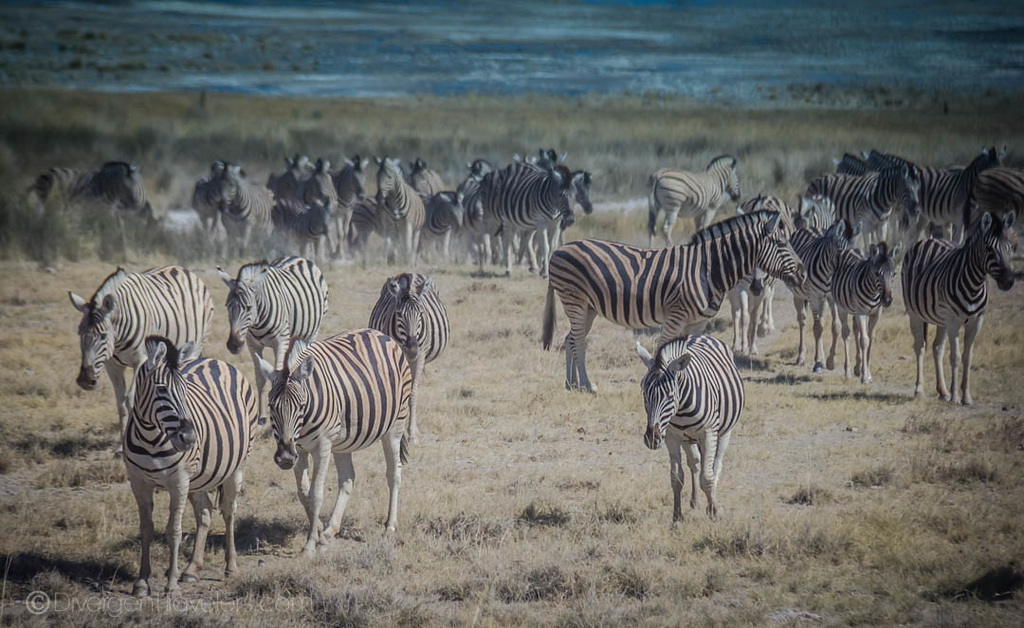
How to Get to Etosha NP
Getting to Etosha and entering the huge park depends on where you are coming come from since there is more than just one entrance. There are actually four access gates: the King Nehale gate in the North, The Anderson Gate in the South, the Von Lindequist Gate in the East and Galton Gate in the western end of the park.
The best way to reach the park is to book a flight to Hosea Kutako International Airport, located 40 kilometers from Namibia’s capital city, Windhoek. At the airport, rent a 4X4 vehicle to drive yourself to Etosha.
There are 435 kilometers between Windhoek and the park so you’ll be driving for around six hours. In this case, you will enter Etosha through the Anderson’s Gate and have Okaukuejo as the closest camp.
If self-driving is not your idea of a fun vacation then you can join one of the many organized tours.
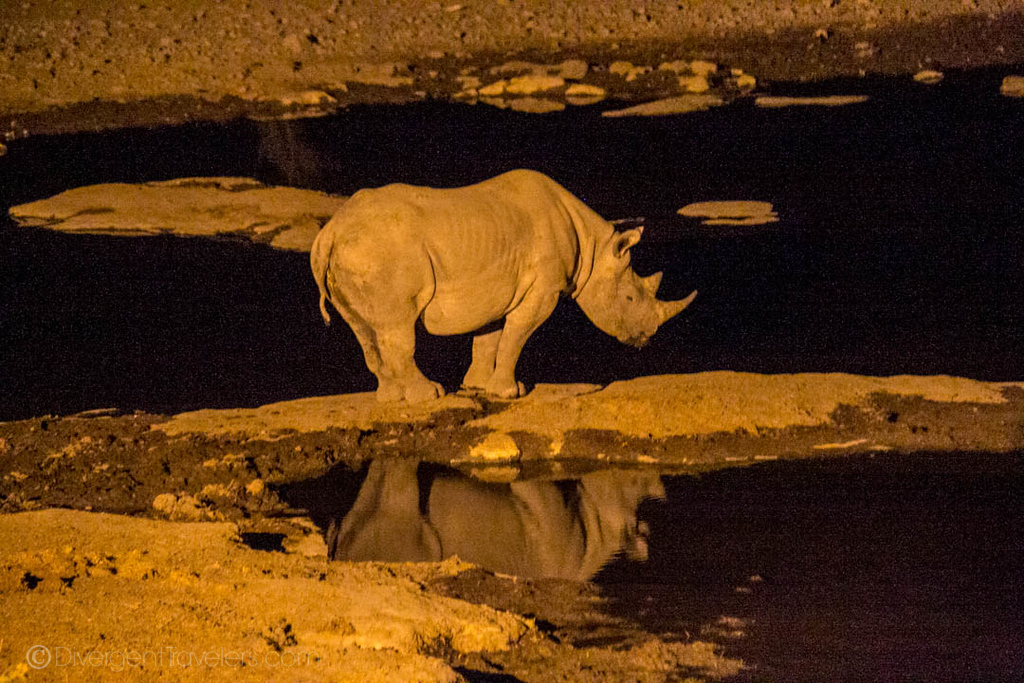
Where to Stay in the Park
There are many people who come to Etosha for just one day, but if you want a really memorable experience, staying more than a single day is strongly advisable. In this case, you need to find a comfortable place to sleep. You can choose to stay in the park itself or find accommodation just outside the park’s borders.
Namibia Wildlife Resorts offer visitors the chance to sleep in one of their six camps. The main locations, Okaukuejo resort as well as Halali resort are perfect for enjoying the park during the night as there are lit waterholes and a protected area where you can relax and wait for the animals to arrive.
If you want a luxurious camp experience with fewer tourists around, check out the accommodations at Dolomite. Romantic travelers who want to add admiring beautiful sunsets and sunrises to their wildlife watching experience should make reservations at Onkoshi resort .
While bird lovers can have a fantastic stay at Namutoni. And if you want to “meet” an impressive number of local elephants, staying at the remote Olifantsrus camp is your best bet.
Travelers who would rather sleep outside the park can choose between several available options. A good, budget-friendly place is Mokuti Etosha Lodge . Located only a few minutes away from the park’s eastern gate, the charming lodge offers a variety of cozy rooms.
The standard and the family rooms are well-equipped and beautifully decorated offering guests all the comfort they should need.
If you’re looking to splurge on your vacation, combining a wild adventure with lavish accommodation might be a great idea for you. In this case, you should check out the high-end rooms at Mokuti Etosha Lodge or the rooms available at Onguma, a more expensive, but truly unique game reserve, located right next to the park.
This reserve offers you the chance to choose from staying in luxury tents, bush suites, treetop camps, and more!
Read reviews and check prices with our Hotel Search Engine , that gives you the best hotel deals found on the web. Our search engine pulls results from all of the major booking places, including Expedia, Hotels, Booking and more. All the options, all the deals, all in one place and just for you.

What to Expect During your Visit
Amazing and unique landscapes.
Visiting the beautiful Etosha Park will not only give you the chance to admire its rich wildlife but also explore its stunning landscape, which mainly consists of Savannah Woodland. The park is also known for hosting the largest salt pan in Africa. It’s so big that it is visible from space!
You will see a variety of trees, but you will mostly encounter the mopane, a tree with bright green, butterfly-shaped leaves. Driving around the park to explore the park’s various landscapes is pretty easy since it is usually not too crowded and the roads are in good condition.
Amazing Game Viewing
Besides hosting four of the Big Five (elephant, lion, leopard, and rhinoceros), Etosha gives you the chance to spot its 114 other mammals. One visit will most likely not be enough to see them all, but if you’re lucky, well-equipped, have a good guide and you pay attention, you can see more than you might imagine.
The most common animals spotted are lions, zebras, and elephants but expect to see the endangered black rhinos, giraffes, kudus, and many more!
Our top recommended tours that include Etosha National Park:
- G Adventures Cape and Dunes Overland
- G Adventures Wonders of Namibia
- G Adventures Wildlife and Wonders of Southern Africa
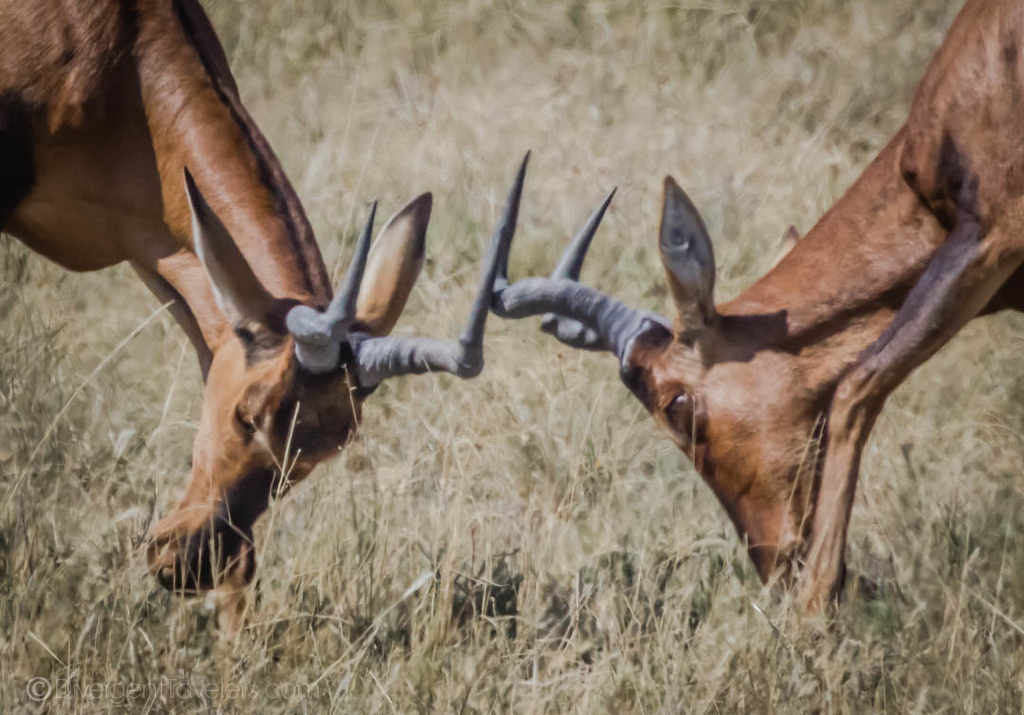
Make the Most of Your Etosha National Park Experience
Essential items to bring.
As already stated, visiting a National Park like Etosha is totally different from most other vacation such as a city break. Make sure to remember this when packing your luggage.
So, to feel comfortable pack the right type of clothing. A good mix of clothing is necessary due to the varying temperatures. It can be extremely hot during the day, but at night and in the early morning, the temperatures can get pretty low.
In addition, make sure you pack sunblock and a sun hat. You really do need to protect your skin from the African sun. We shouldn’t need to mention this item, but do not forget your camera!
If you’re a photographer of some sort, a zoom lens will be required to take the best photos of the animals, which at times, will be at quite a distance.
Tips for Spotting and Identifying Wildlife
To spot and identify the animals, it’s best to use binoculars and a map of the park. Both can be provided by your guide, some accommodations or at the kiosks inside the park.
A map will help you explore the park accurately and will be a great source of useful information about the nearest/best waterholes and the animals that gather around them.
Those of you with limited wildlife knowledge should consider buying an illustrated animal book which can be useful to help to identify the animals you have never seen before.
As mentioned, waterholes are a great bet for spotting large numbers of animals and their natural behavior, but looking carefully under the trees is also recommended, especially in the middle of the day, since many animals will be seeking shade for cover from the heat of the sun.
R emember, be patient, be quiet, drive slowly, and if you see many cars gathered in one place it might be a good idea to join them to see what they’ve spotted!
Don’t leave home without: Lonely Planet Watching Wildlife Southern Africa (Travel Guide)
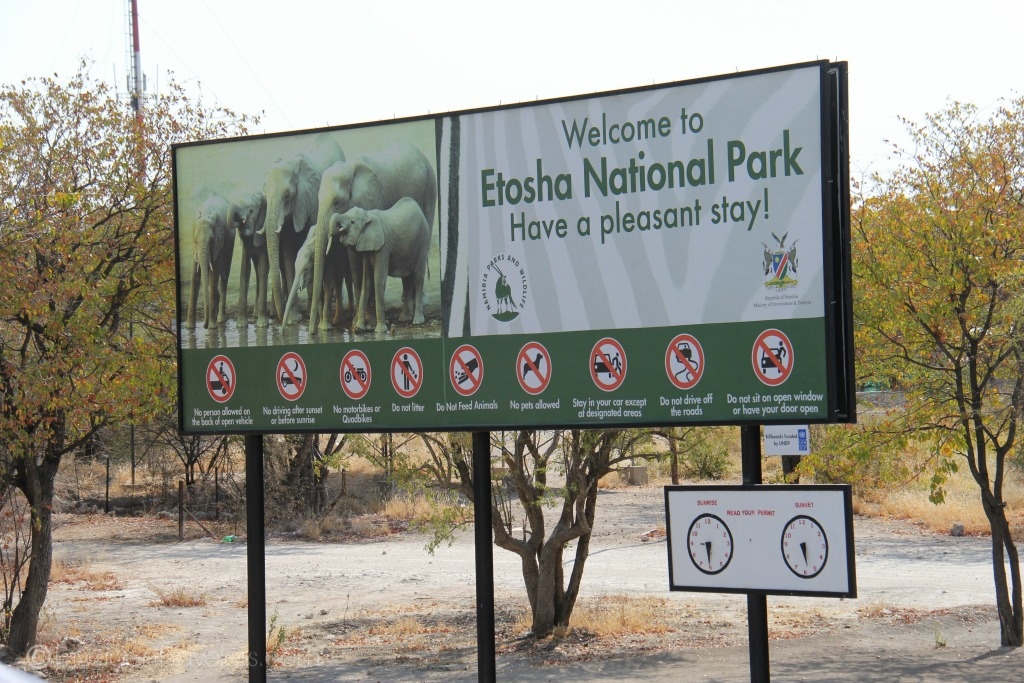
Important Safety Tips
When visiting destinations like the Etosha National Park in Nambia, you have to do everything you can to keep yourself safe. After all, you’re going to surrounded by wild and dangerous animals.
Firstly, returning to camp before the sun sets is crucial. Not only is driving at night dangerous, but it is also prohibited. Drive slowly, not only to see the game but also to keep yourself and the other passengers safe.
Make sure you have plenty of water with you at all times and if you are self-driving, enter the park with a full tank of gas. You do not want to be running out of gas where there are hungry lions roaming freely.
Though, at some point, you might feel the need to get out of the car, don’t! Always follow your guide’s guidance or wait until you arrive at an area where exiting your car is permitted.
Last, but definitely not least, under no circumstances should you try to interact with the animals. Do not feed them and do not pet or play with them. Doing so would be extremely stupid, even if you feel safe inside your car.
In addition to these safety tips, before embarking on this amazing adventure, you are strongly advised to read the regulations and guidelines available on the Etosha National Park website.
More on Namibia:
- Swakopmund Namibia Adventure Guide
- Epic Sossusvlei Planning Guide
- Fish River Canyon: The Grand Canyon of Namibia
- Deadvlei Brings Beauty to Death in Namibia
- Skydiving 10,000 Feet in Namibia
- 25 Epic Places to Have the Best Safari in Africa
- African Safari Animals and Where to Find Them
- 25 Photos That Will Make You Want To Visit Africa
- Africa Overland Trip Budget – Oasis Overland
- Oasis Overland Trip Through Africa – What to Expect
- Ultimate Vaccination Guide for Africa Travel
Did you like this story? Share it!
Travel planning resources, about lina stock.
Lina is an award-winning photographer and writer that has been exploring the world since 2001. She has traveled to 100 countries on all 7 continents. Member: SATW, NATJA, ATTA, ITWA
2 thoughts on “Etosha National Park Safari Guide”
Etosha looks so magical in this blog! I’m sure it is magical in real life. I enjoyed reading your article that’s informative, and aesthetic. There are so many valuable details to keep! So thankful to find your post.
Etosha is a special place. We loved going on safari there, so different and unique!
Leave a Comment Cancel reply

- Accommodations
8:00am - 17:00PM
Top Destinations
- South Africa
- East Africa

- Destinations 8 African Countries
- Safari Packages Recommended Itineraries
- Victoria Falls Best Tours & Activities
- Houseboats Excitement Of Exploring
- Overland Expeditions Self-Reliant Adventure Travel
- Let's Plan Journey
- Destinations
- Safari Packages
- Victoria Falls
- Overland Expeditions

Let Us Be Your Guide

Etosha National Park
- Travel Guide
About Etosha National Park
Etosha National Park is one of Namibia's top tourist destinations, known for its diverse wildlife, stunning landscapes, and unique experiences. Located in the north of the country, the park covers an area of over 22,000 square kilometers and is home to over 100 mammal species, including elephants, lions, leopards, and rhinos, as well as hundreds of bird species. One of the best ways to experience the park's natural beauty and wildlife is through an Etosha National Park Safari .
Here we will explore everything you need to know about Etosha National Park safaris, including the best time to visit, the top wildlife to see, and the different Namibia Safari options available.
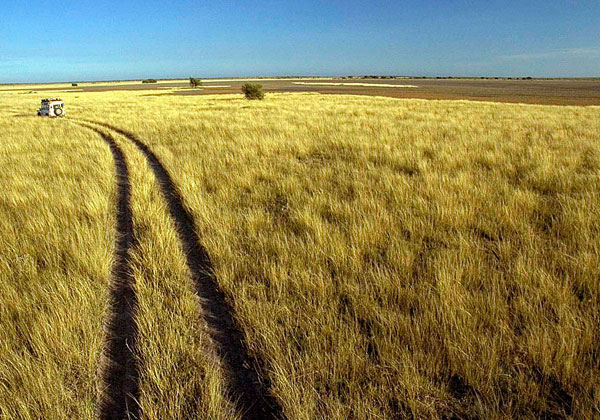
Etosha Tours and Safaris
We think you’ll love.
- Etosha (25)

Namibia Safari
6 days - 5 nights, 6 day dunes & wildlife of namibia.
Location: Etosha
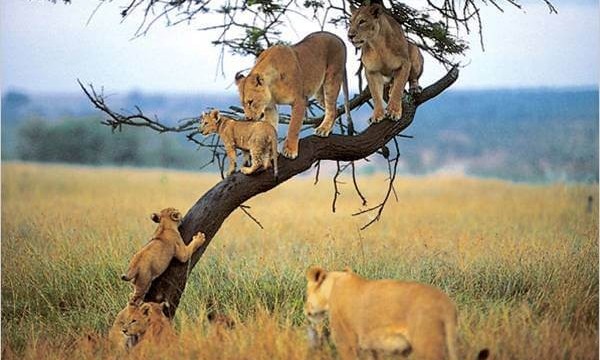
4 Days - 3 Nights
4 day etosha safari shuttle tour.
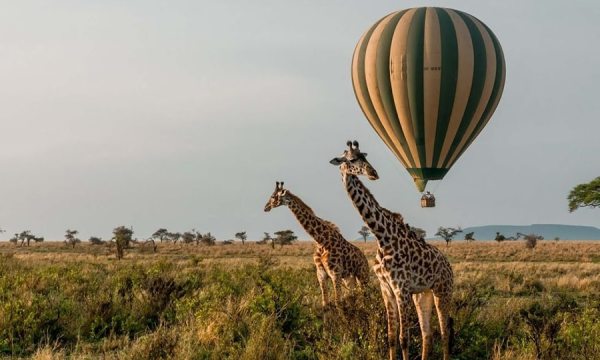
4 Day Etosha Fly-in Safari

4 Day Classic Etosha National Park Safari
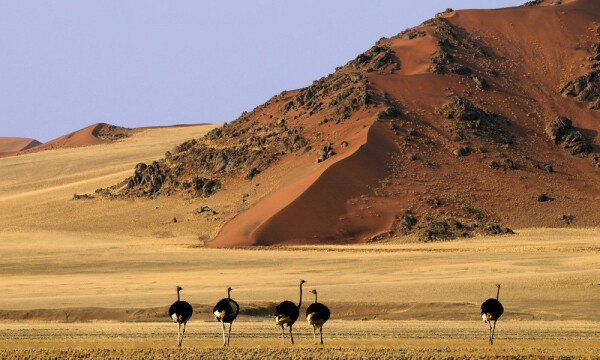
7 Days - 6 Nights
7 day taste of namibia.

5 Days - 4 Nights
7 day namibia self drive to etosha.
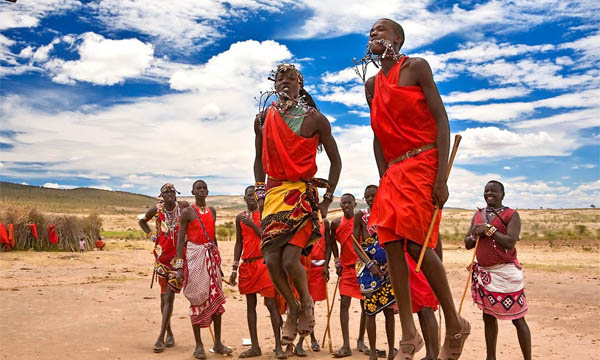
7 Day Tribes of Northen Namibia Cultural Safari
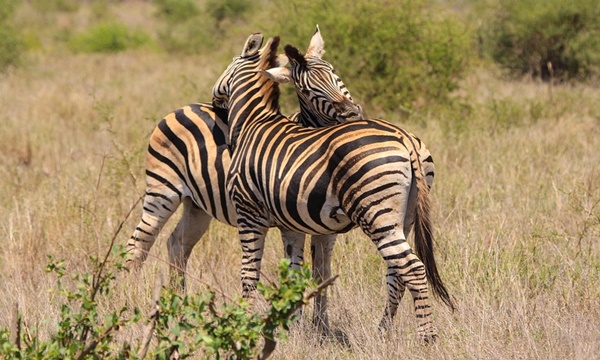
8 Days - 7 Nights
8 day northen namibia adventure safari.
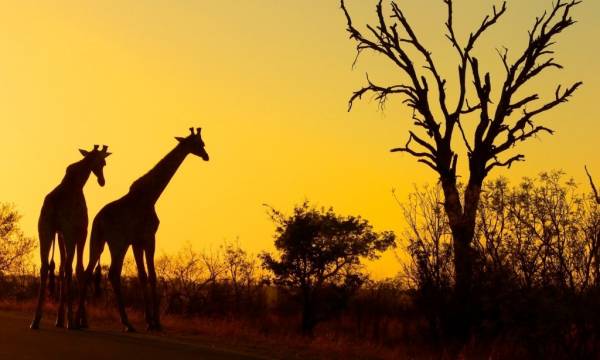
10 Days - 9 Nights
10 day the classic namibia safari.
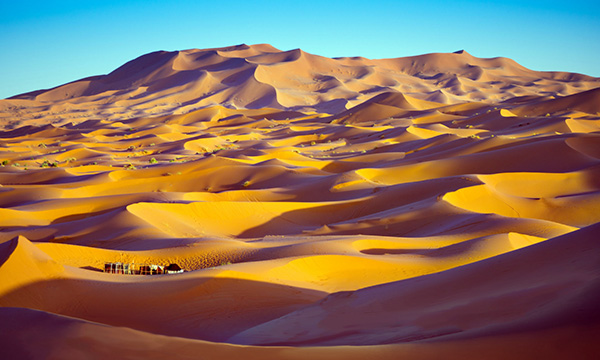
9 Days - 8 Nights
9 day namibian desert & damaraland trail.
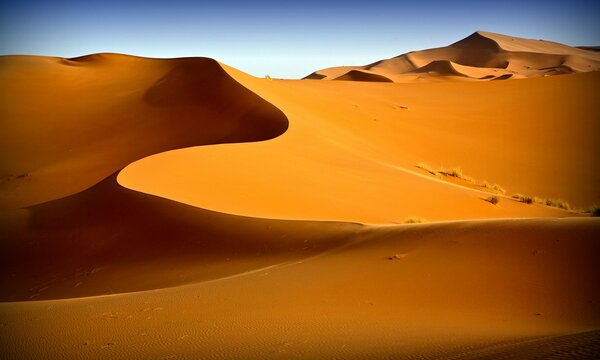
10 Day Namibia Highlights Safari

11 Days - 10 Nights
11 day dust of beautful africa.

12 Days - 3 Nights
12 day exploring namibia.
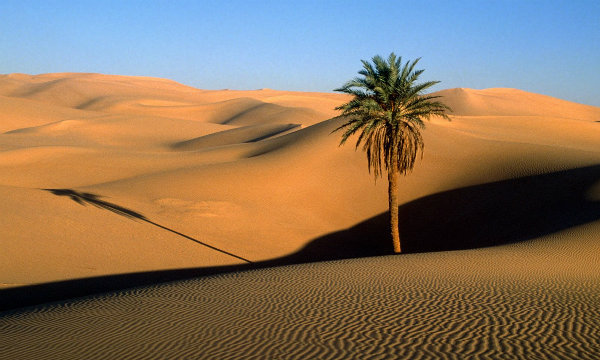
13 Days - 12 Nights
13 day namibian highlights.
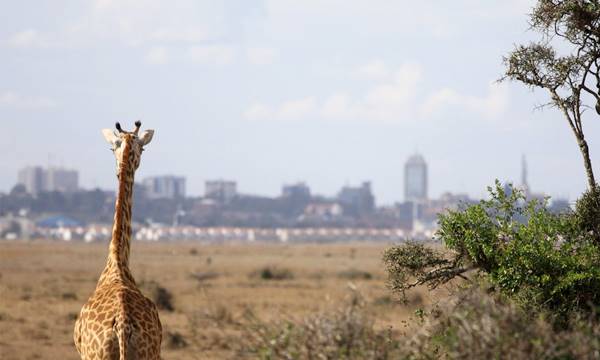
13 Day Exclusive Fully Serviced Namibia
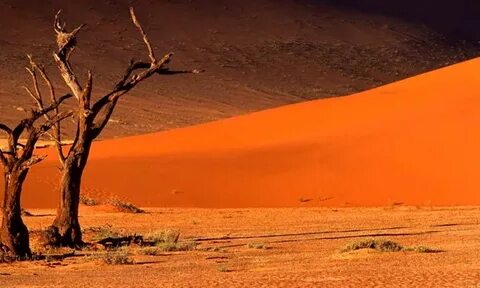
12 Days - 11 Nights
12 day great namibian journey.
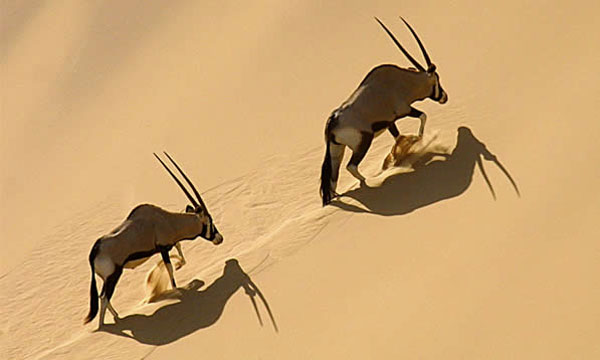
15 Days - 14 Nights
15 day namibia deserts and wildlife.

20 Days - 21 Nights
20 day africa safari tour.
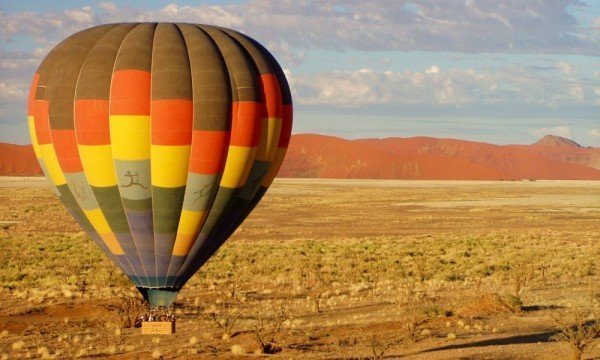
3 Days - 2 Nights
3 day etosha fly in safari luxury.
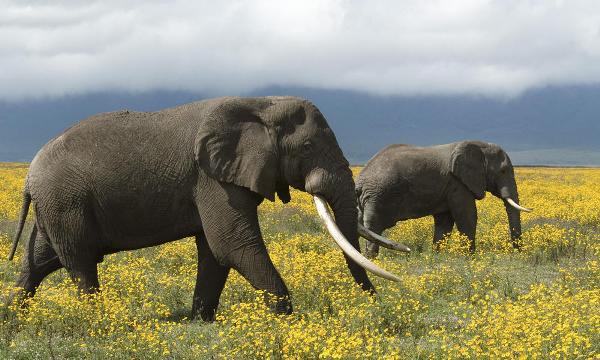
3 Day Etosha Fly in Safari Standard

3 Day Etosh Excursion Luxury
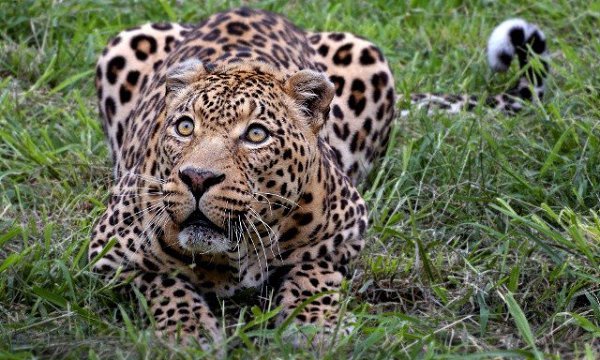
9 Day Wildlife Safari Standard
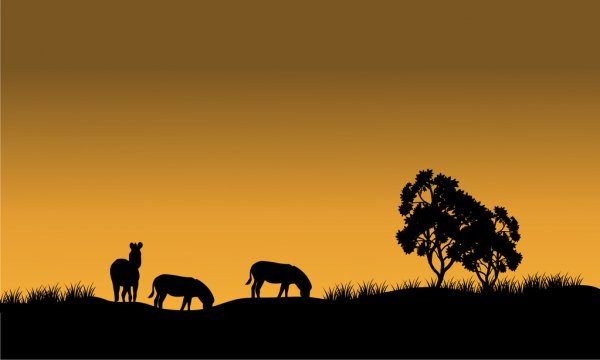
15 Day Ultimate Wildlife & Bird Safari Luxury
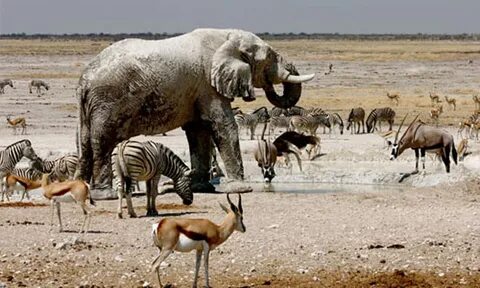
8 Day Bushman and Delta 4x4 Adventure Namibia to Zambia
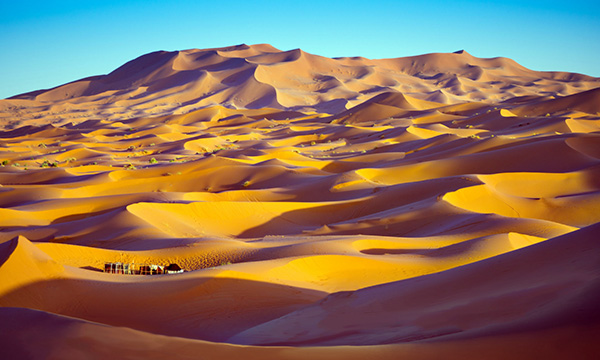
16 Days - 15 Nights
16 day namibia safari - etosha national park, sossusvlei, best time to visit.
The Best Time To Visit Etosha National Park is between July and October. During these dry winter months, wildlife viewing is at its peak as animals gather around the limited water sources, making them easier to spot. While the wet season from November to April offers its beauty, wildlife tends to disperse due to the abundance of water, making sightings less frequent. For the most vivid animal encounters, aim for the dryer part of the year.
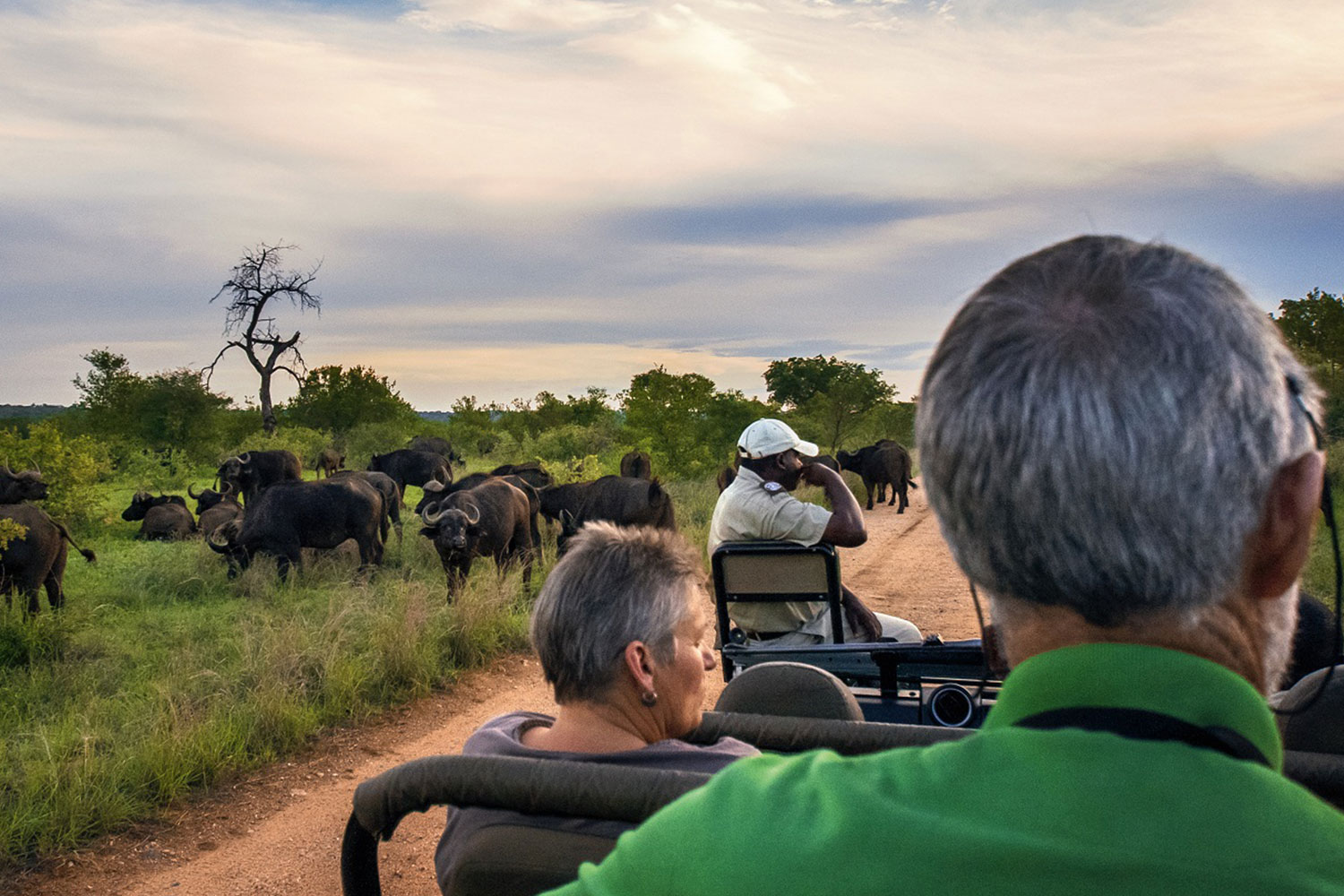
Etosha National Park is a Namibia Wildlife wonder, home to four of the Big Five, minus the buffalo. Here, you can see herds of elephants, zebras, and special creatures like the black-faced impala and damara dik-dik. Lions, leopards, and sometimes even the shy black rhino gather around the waterholes, making every visit filled with memorable moments and close encounters with nature.
What To Experience
We think you will love.
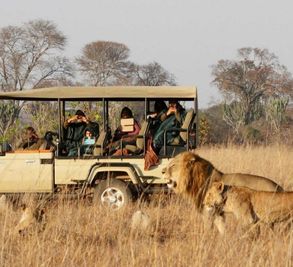
- Game Drives
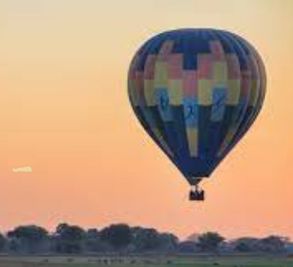
Ballon Safari
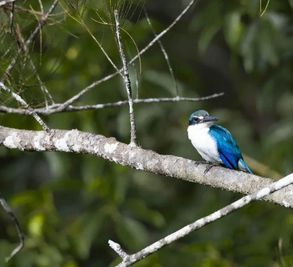
Walking Safari
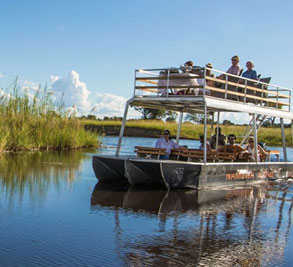
Boating Safari

Etosha National Park Travel Guide
History of etosha national park, best time to visit etosha national park, dry season and wet season in etosha national park, getting to etosha national park, getting around etosha national park, wildlife in etosha national park, etosha birdlife, engendered wildlife species in etosha national park, safari activities in etosha national park, where to stay in etosha national park, tips and other safety advice for etosha, what to wear on etosha safaris, final thoughts.
Etosha National Park was established in 1907 by the German colonial government, making it one of the oldest conservation areas in Africa. The park was initially created to protect the region's wildlife and to provide a hunting ground for German colonizers.
However, hunting was banned in the park in 1954, and designated as a game reserve. In 1967, it was officially declared a national park and became a UNESCO World Heritage Site in 2007.
The Best Time To Visit Etosha National Park depends on your interests and preferences. However, the peak season for safari in Etosha is during the dry season, which runs from May to October.
During this time, the weather is dry and mild, making it easier to spot wildlife as they gather around waterholes. The vegetation is also less dense, making it easier to spot wildlife. The months of June to August are the busiest and most popular for a safari in Etosha, so it's important to book accommodations and activities well in advance.
If you prefer a quieter experience with fewer tourists, you may want to consider Etosha National Park Safari during the rainy season, which runs from November to April. During this time, the park's landscapes are lush and green, and the wildlife is more active.
However, some areas of the park may be inaccessible due to flooding, and mosquitoes and other insects can be more prevalent. It's also important to note that the park's camps and lodges may have limited availability during the rainy season.
Overall, the best time to visit Etosha National Park for wildlife viewing is during the dry season, while the best time for photography and enjoying the park's landscapes is during the rainy season.
Ultimately, the best time to visit Etosha National Park depends on your interests and preferences, as well as the availability of Namibia Accommodations and Namibia Safari Activities .
Etosha National Park experiences two distinct seasons: a dry season and a wet season. The dry season typically runs from May to October, while the wet season runs from November to April. Each season has its unique characteristics and impacts on the park's wildlife and ecosystem.
Dry Season:
During the dry season, the temperatures in Etosha National Park can be extremely high, with average daily temperatures ranging from 25-35°C. The lack of rain also means that the vegetation is dry and sparse, making it easier to spot wildlife congregating around the remaining water sources, such as waterholes and springs.
The dry season is generally regarded as the best time for wildlife viewing in Etosha National Park. As water becomes scarce, the animals are forced to gather around the remaining water sources, making it easier to spot a wide range of animals, including elephants, lions, giraffes, and antelopes.
Wet Season:
The wet season in Etosha National Park is characterized by hot and humid conditions, with average daily temperatures ranging from 30-40°C. During this season, the park receives its annual rainfall, which can cause flooding in some areas of the park.
The wet season is a time of renewal and rejuvenation for Etosha's ecosystem, with the rains bringing new growth and a flush of greenery. The park's wildlife also benefits from the increased availability of water and food, with many animals giving birth during this time.
However, the wet season can make wildlife viewing more challenging as the animals are more dispersed across the park and not reliant on the few remaining water sources. The heavy rains can also make some roads in the park impassable, limiting access to certain areas.
Etosha National Park is accessible by both road and air. Here are some options for Getting To Etosha National Park :
Self-Drive: You can rent a car in Windhoek or any other major city in Namibia and drive to Etosha National Park. The park is located about 435 km north of Windhoek and the drive takes approximately 5-6 hours.
Private Transfer : You can also hire a private transfer from Windhoek or other major cities to take you directly to Etosha National Park.
Public Transportation: There are public buses and minibuses that travel to Etosha National Park from Windhoek and other major cities in Namibia.
Fly to Windhoek : You can fly into Hosea Kutako International Airport in Windhoek and then rent a car or hire a private transfer to Etosha National Park.
Fly to Ondangwa : The closest airport to Etosha National Park is Ondangwa Airport, which is located about 90 km from the park. You can fly into Ondangwa from Windhoek or other major cities in Namibia and then hire a private transfer or take a taxi to the park.
Once you’re in Etosha National Park, here’re some ways you can get around Etosha National Park and explore its diverse flora and fauna.
Self-Drive:
Self-driving is the most popular way to explore Etosha National Park. Visitors can rent a car or bring their own and drive through the park at their own pace. The park has well-maintained roads, and most of the main attractions are accessible by car. Self-driving allows visitors to stop and explore at their leisure and provides a more flexible experience.
Guided Game Drives:
Guided game drives are a great way to explore the park and learn from experienced guides who know the area intimately. Visitors can book guided game drives through one of the lodges or tour operators in the park. Game drives are usually conducted in open safari vehicles, which provide an excellent opportunity for wildlife viewing and photography.
Night Drives:
Etosha National Park is open 24 hours a day, and visitors can book night drives to explore the park after dark. Night drives offer a unique opportunity to see nocturnal animals, such as hyenas, lions, and leopards, as they become active after sunset. Visitors can book night drives through one of the lodges or tour operators in the park.
Walking Safaris:
Walking safaris are a unique way to experience the park's wildlife and landscapes up close. Visitors can book guided walking safaris through one of the lodges or tour operators in the park. Walking safaris provide an opportunity to explore areas that are not accessible by car and offer a more intimate experience with the park's wildlife.
Cycling is another way to explore the park and its surrounding areas. Visitors can rent bicycles from some of the lodges or tour operators in the park and explore the park's network of roads and trails. Cycling provides an excellent opportunity to experience the park's landscapes and wildlife at a slower pace.
Etosha National Park is known for its diverse wildlife and is home to over 100 mammal species, making it one of the best places in Africa to see wildlife. Here are some of the top animals to look out for on an Etosha National Park Safari:
Etosha National Park is home to a large population of elephants, and visitors can often see them in groups around watering holes.
Lions are one of the most sought-after animals on safari in Etosha. Visitors can spot these majestic predators in various parts of the park, including around watering holes and on open plains.
Leopards are the most elusive of the big cats, but they can still be spotted in Etosha National Park. They are often seen at night, so visitors may want to consider a night drive to increase their chances of seeing them.
Etosha National Park is home to both black and white rhinos, which are often seen grazing on the grasslands.
The tall and graceful giraffes can be seen wandering around the park, browsing tall trees and bushes.
The iconic black-and-white stripes of zebras can be seen grazing in herds throughout the park.
- Wildebeest:
The wildebeest, also known as the gnu, is another common sight in Etosha National Park, often seen in large herds.
Cheetahs are the fastest land animals in the world and can be seen sprinting across the park's open plains.
Hyenas can be seen scavenging and hunting in the park, often at night.
Etosha National Park is also a haven for birdwatchers, with over 340 species recorded in the park, including eagles, vultures, owls, and various water birds.
Etosha National Park is a birdwatcher's paradise, with over 340 bird species recorded in the park. From soaring eagles to delicate weavers, here are some of the bird species you can spot on an Etosha National Park Safari Tour -
Etosha National Park is home to a variety of endangered and vulnerable species that are protected under Namibian conservation laws. Here are some of the endangered species found in Etosha National Park:
- Black Rhino
- African Wild Dog
- Brown Hyena
- Damara Dik-Dik
- Roan Antelope
Etosha National Park offers a wide range of safari activities for visitors to experience the park's diverse wildlife and unique landscapes. Here are some of the top safari activities to do in Etosha National Park Safari .
Game drives are one of the most popular safari activities in Etosha National Park. Visitors can take a guided game drive in an open-top safari vehicle to explore the park and spot a variety of wildlife. Game drives are usually offered early in the morning or late in the afternoon when wildlife is most active.
- Night Game Drives
Night game drives offer a unique opportunity to see the park's nocturnal wildlife, such as lions, leopards, and hyenas. Visitors can take a guided night drive in the park to see these animals in their natural habitat.
- Self-Drive Safaris
Etosha National Park offers self-drive safari options for visitors who want to explore the park on their own. Visitors can rent a vehicle and drive through the park, stopping at various waterholes to watch wildlife and take photos.
- Walking Safaris
Walking safaris are a great way to get up close and personal with the park's wildlife and experience the natural environment. Visitors can take a guided walking safari with an experienced guide to explore the park's vegetation and spot smaller animals like birds and insects.
- Bird Watching
Etosha National Park is home to over 300 species of birds, making it a great destination for birdwatchers. Visitors can take a guided bird-watching tour or explore the park on their own to spot a variety of bird species, including ostriches, eagles, and flamingos.
- Cultural Tours
In addition to wildlife viewing, visitors can also take cultural tours in Etosha National Park to learn about the park's history and the culture of the local communities. Cultural tours may include visits to traditional villages, museums, and cultural centres.
- Photography Safaris
Etosha National Park offers unique opportunities for photography safaris, with its stunning landscapes and diverse wildlife. Visitors can take a guided photography safari or explore the park on their own to capture amazing photos of the park's wildlife and natural scenery.
The Cost of Safari Activities in Etosha National Park
The cost of safari activities in Etosha National Park can vary depending on the type of activity you choose Etosha National Park Tours . Here are some estimated costs for safari activities in Etosha National Park.
Etosha National Park offers a range of accommodation options, including lodges, campsites, and hotels. Here are some of the most popular Namibia Accommodations options:
Okaukuejo Rest Camp: This is the oldest and largest rest camp in Etosha National Park and is located near the southern entrance to the park. It offers a variety of accommodation options, including chalets, family chalets, and double rooms. The camp also features a restaurant, swimming pool, and a floodlit waterhole for game viewing.
Halali Rest Camp: Located in the middle of Etosha National Park, Halali Rest Camp offers a range of accommodation options, including bush chalets, double rooms, and camping sites. The camp features a restaurant, swimming pool, and a floodlit waterhole for game viewing.
Namutoni Rest Camp: This rest camp is located near the eastern entrance to Etosha National Park and offers a range of accommodation options, including chalets, family chalets, and double rooms. The camp features a restaurant, swimming pool, and a floodlit waterhole for game viewing.
Dolomite Camp: This luxury camp is located in the western part of Etosha National Park and offers 20 chalets with private decks and stunning views of the surrounding landscape. The camp features a restaurant, swimming pool, and a waterhole for game viewing.
Ongava Lodge: This private game reserve is located just outside of Etosha National Park and offers luxury accommodation in 14 chalets and a family unit. The lodge features a restaurant, bar, swimming pool, and game drives on its private reserve.
Mokuti Etosha Lodge: Located just outside of Etosha National Park's eastern entrance, Mokuti Etosha Lodge offers 106 rooms, including luxury rooms and suites. The lodge features two restaurants, a bar, swimming pool, and a spa. Game drives and other activities are also available.
Etosha Safari Lodge: This lodge is located just outside of Etosha National Park's southern entrance and offers 65 rooms, including chalets and family rooms. The lodge features a restaurant, bar, swimming pool, and a waterhole for game viewing.
Andersson's Camp: This eco-friendly camp is located in the private Ongava Game Reserve just outside of Etosha National Park's southern boundary. The camp offers 20 luxury tents and features a restaurant, bar, swimming pool, and game drives on the reserve.
Onkoshi Camp: This eco-friendly camp is located on the edge of Etosha Pan and offers luxury accommodation in 15 chalets. The camp features a restaurant, bar, and a swimming pool. Game drives and guided walks are available.
Etosha National Park is a beautiful and unique wilderness area, but it is important to be aware of some tips and safety advice to ensure a safe and enjoyable visit. Here are some tips and safety advice for visiting Etosha National Park:
Always Follow The Park Rules:
Etosha National Park has strict rules and regulations that are in place to protect the park's wildlife and visitors. Visitors should read and follow the park rules and regulations to ensure their safety and the safety of the park's wildlife.
Respect the wildlife:
Etosha National Park is home to a diverse range of wildlife, including some of Africa's most iconic species. Visitors should respect the park's wildlife and keep a safe distance at all times. It is also important to remember that the animals are wild and unpredictable, so visitors should never approach or disturb them.
Stay in designated areas:
Visitors should stay in designated areas and on marked roads and trails to avoid damaging the park's fragile ecosystems. Driving off-road is strictly prohibited and can result in hefty fines.
Carry enough water and supplies:
Etosha National Park is a remote wilderness area with limited facilities. Visitors should carry enough water and supplies for their trip, including food, sunscreen, and insect repellent. It is also important to note that the park's temperatures can be extremely high, so visitors should dress appropriately and stay hydrated.
Drive carefully:
Driving in Etosha National Park can be challenging, with gravel roads and wildlife crossing the roads at any time. Visitors should drive carefully and follow the speed limits to avoid accidents. It is also important to be aware of other vehicles on the roads and give way to larger vehicles, such as tour buses.
Beware of disease-carrying insects:
Etosha National Park is home to several species of disease-carrying insects, such as mosquitoes and ticks. Visitors should take precautions to avoid insect bites, including wearing long-sleeved clothing and using insect repellent.
Use a reputable tour operator:
If visitors are planning to book a guided tour, they should use a reputable tour operator that follows safety standards and regulations. Visitors should also check the operator's credentials and reviews before booking.
What to wear on a safari in Etosha National Park largely depends on the time of year and the weather conditions. Here are some tips on what to wear during your Namibia Safari :
Comfortable and breathable clothing:
It is recommended to wear comfortable, lightweight, and breathable clothing during the daytime as temperatures in Etosha National Park can get very high. Natural, light-coloured fabrics like cotton and linen are good choices as they can help to keep you cool and prevent overheating.
Layered clothing:
During the cooler months, particularly in the early morning and evening, temperatures in Etosha can get chilly. It is therefore recommended to wear layered clothing, so you can easily adjust to the changing temperatures throughout the day.
Closed-toe shoes:
Closed-toe shoes with good traction are recommended to protect your feet and provide good grip when walking on uneven terrain during game drives and guided walks.
A sun hat is essential to protect your head and face from the strong African sun. Choose a wide-brimmed hat that provides good coverage and ventilation to keep your head cool.
Sunglasses:
Sunglasses with good UV protection are important to protect your eyes from the glare of the sun.
Insect repellent:
Insects, particularly mosquitoes and ticks, are common in Etosha National Park. It is therefore recommended to use a good quality insect repellent on exposed skin to help prevent insect bites.
Neutral colours:
Neutral-coloured clothing, such as beige, khaki, and brown, are recommended when going on a safari as they blend in with the natural surroundings and do not attract unwanted attention from wildlife.
Etosha National Park - A Guide to Namibia's Iconic Destination! is a unique and captivating destination that offers visitors the opportunity to witness Africa's wildlife in their natural habitat. With its vast landscapes, diverse wildlife, and range of activities, it is a must-see destination for any Namibia Safari enthusiast. A visit to Etosha National Park is sure to leave a lasting impression and unforgettable memories.
Best Month to Visit Central Kalahari
- --> Jan --> Feb --> Mar --> Apr --> May --> Jun --> Jul --> Aug --> Sep --> Oct --> Nov --> Dec -->